Family serves as foundation for Demetrius Jackson's NBA draft rise

Notre Dame nursed a nine-point lead with 6:42 remaining in the second round of the 2015 NCAA Tournament. The 14-seeded Northeastern Huskies had clawed all night. That’s when sophomore point guard Demetrius Jackson emerged from a rebound scrum at the top of the key, jetting into the open floor like a bullet from a loaded gun.
Jackson put Huskies sophomore T. J. Williams in a dizzying spin cycle at half court. He froze Northeastern forward Zach Stahl with a behind-the-back dribble a few strides later. Once Stahl’s head turned, Jackson slipped a gorgeous, no-look bounce pass to the charging big man Zach Auguste, dutifully filling the weakside running lane, for a thunderous, two-handed flush.
The Irish escaped the CONSOL Energy Center in Pittsburgh with a 69–65 victory, the only 3-seed to survive their opening contest of that tournament. Already donning an ACC Tournament crown, the Irish marched all the way to the Elite Eight that spring. Jackson thrived as Jerian Grant’s sidekick, relishing his role as Notre Dame’s lightening-quick, change-of-pace ball handler and draining off-ball triples. Jackson continued his March magic as a junior in 2016, this time shouldering the burden and leading Notre Dame back to the Elite Eight as the Irish’s lead playmaker.
• Draft needs for all 30 teams | Big Board 4.0: Top 60 prospects
The diminutive point guard’s affinity for basketball’s biggest stage sparked his surge up draft boards over a year ago. Now mere hours before the 2016 NBA Draft, Jackson could crack the vaunted lottery and will certainly hear his name called in the first round.
The road to Jackson’s sophomore spurt was far from seamless, though. A harmonious coexistence with Grant once appeared implausible. As a freshman, head coach Mike Brey awarded Jackson nearly 25 minutes per game throughout the Irish’s first 12 contests. Jackson struggled to adjust. Playing behind Grant and three-year starter Eric Atkins left fewer than five shots for the freshman each night.
“He wasn’t playing as much as he wanted to. He wasn’t playing in the role that he wanted to play,” Brey says. Then, on Dec. 23, Notre Dame announced Grant’s season was ending due to an undisclosed academic suspension, and the Irish’s inaugural ACC run slogged to a 6–12 start. “We were hanging on for dear life,” Brey says.
Brey used Grant’s suspension to find more minutes to incorporate sharpshooting freshman Steve Vasturia. As Jackson continued to seethe through on-court claustrophobia, his grades suffered. Brey promptly slapped him with a one-week suspension in February, effectively benching the local product for two games. “I’ve got a pretty good political base here, we’ve won enough, they’re not trying to run me out of town,” Brey says. “When I suspended him, shoot, the local people were wondering about who’s coaching this program.”
2016 NBA Draft Big Board
#1: Brandon Ingram, Duke — 6'9", 195 | Forward | Freshman
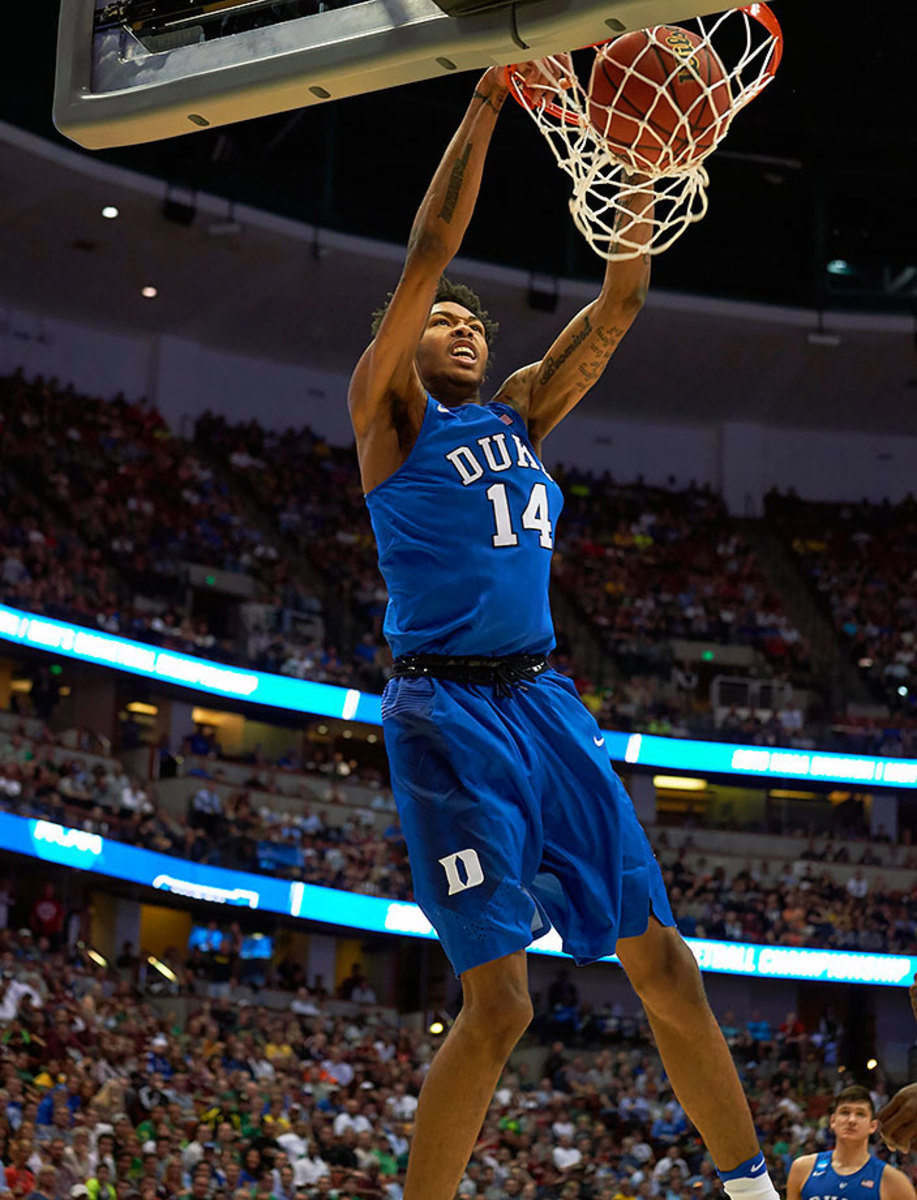
It sounds like the Sixers are almost-definitely going to draft Ben Simmons first. You can justify both players there, but I’m sticking with Ingram as the top overall prospect. He is not as physically prepared for the NBA, but Ingram’s combination of scoring instincts and shooting ability offer him a clear pathway to NBA success and lessen the risk involved in his development. In a draft where there are few “wow” prospects, Ingram offers the best combination of low risk and high reward.
#2: Ben Simmons, LSU — 6'10", 240 | Forward | Freshman
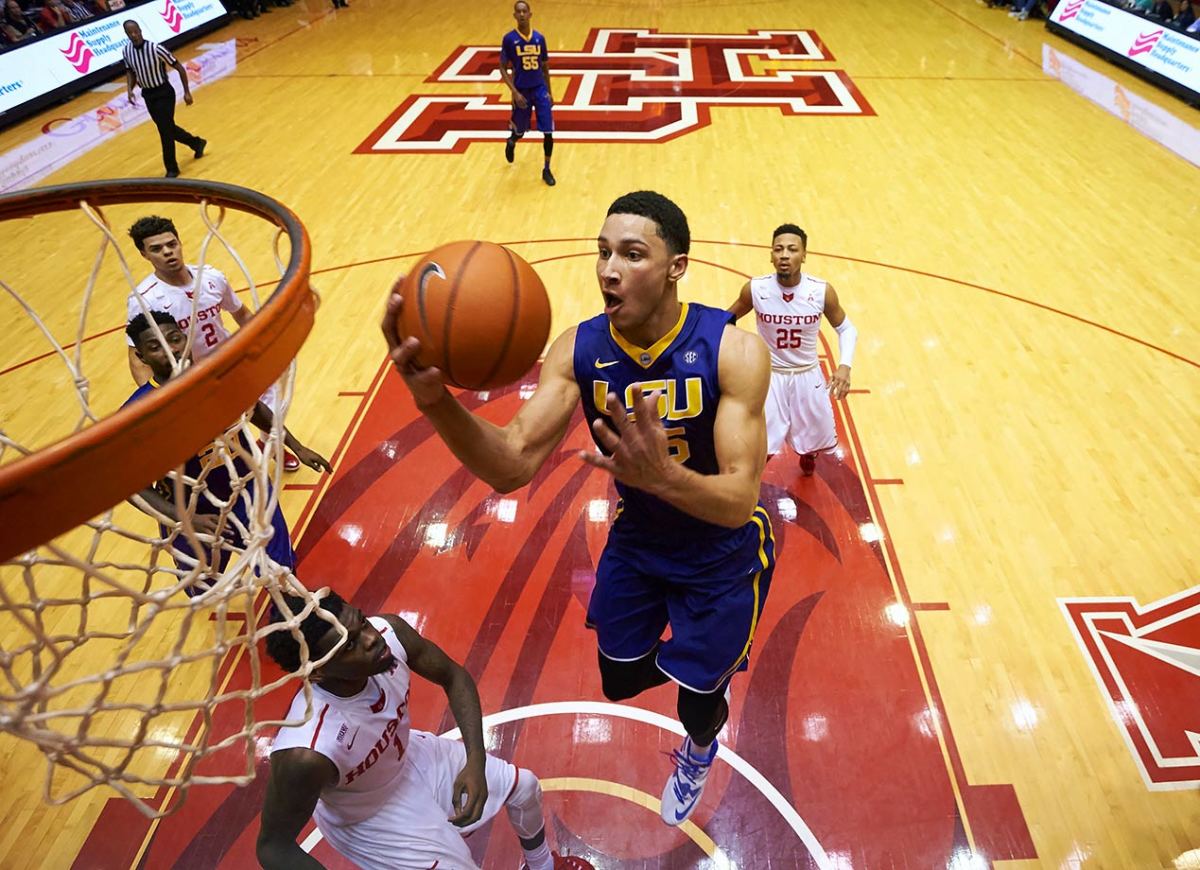
Simmons is one of the more unique talents to come along in decades, and all signs point to him being selected No. 1. He is not a scorer by trade, nor a highly instinctive or diversified one, but his innate passing ability at his size makes him special. Drafting him means committing to putting shooters around him and enabling him to do what he does best as a ballhandler. Building that roster also means investing time and assets, and enabling is a key word here for a kid whose approach to the game and handling of adversity has come into question. But if it all comes together right, he could be a spectacular player indeed.
#3: Dragen Bender, Maccabi Tel-Aviv — 7'0", 216 | Forward | 18 years old
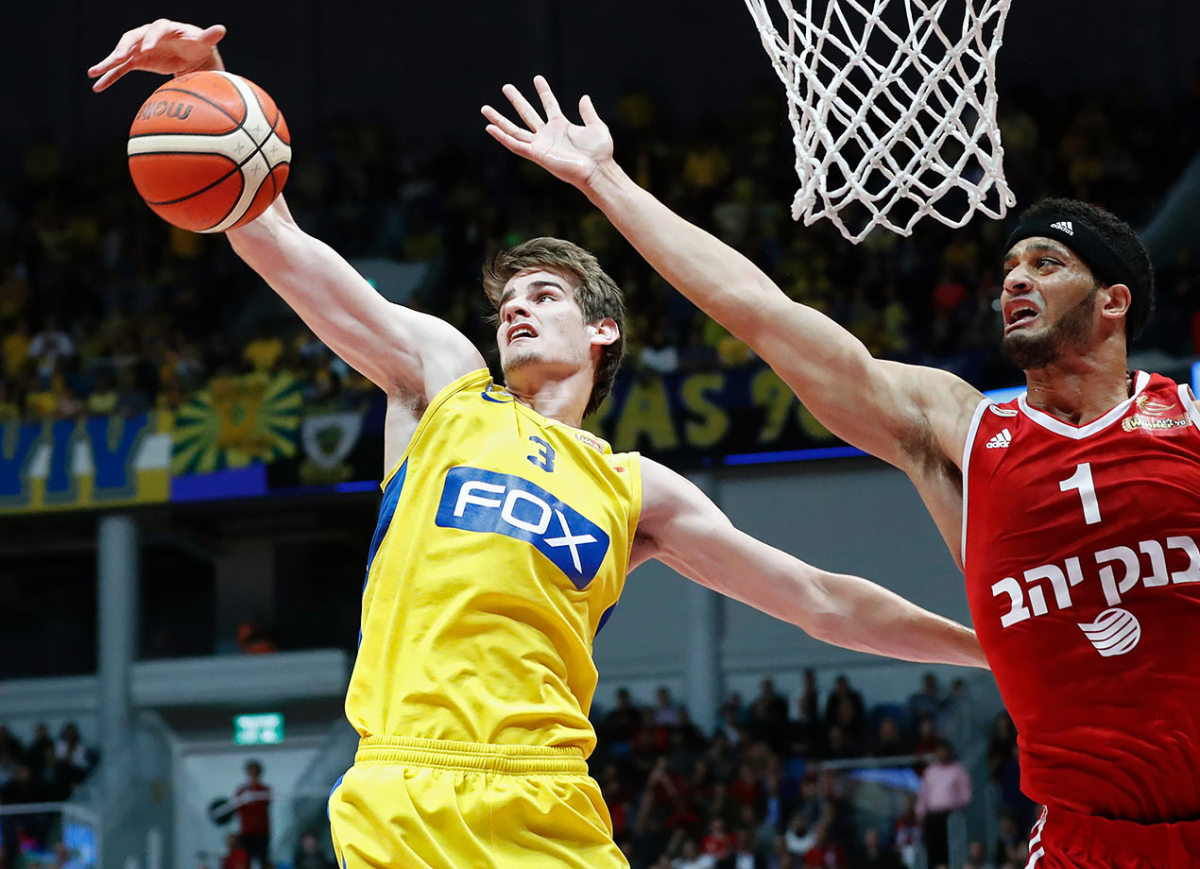
I loved the Toni Kukoc comparison that Luke Winn posed in SI’s recent feature on Bender. Bender’s not unlike Simmons in that sense as an oversized passer, although he doesn’t facilitate offense on the ball in the same fashion. With his playmaking, shooting potential and unselfishness at 7' 0", Bender has the talent to become a weird but fashionable offensive cog for a good team. As he grows into his body, his place on the floor defensively should become clearer. He’s the youngest player in the draft, too.
#4: Jamal Murray, Kentucky — 6,4", 205 | Guard | Freshman
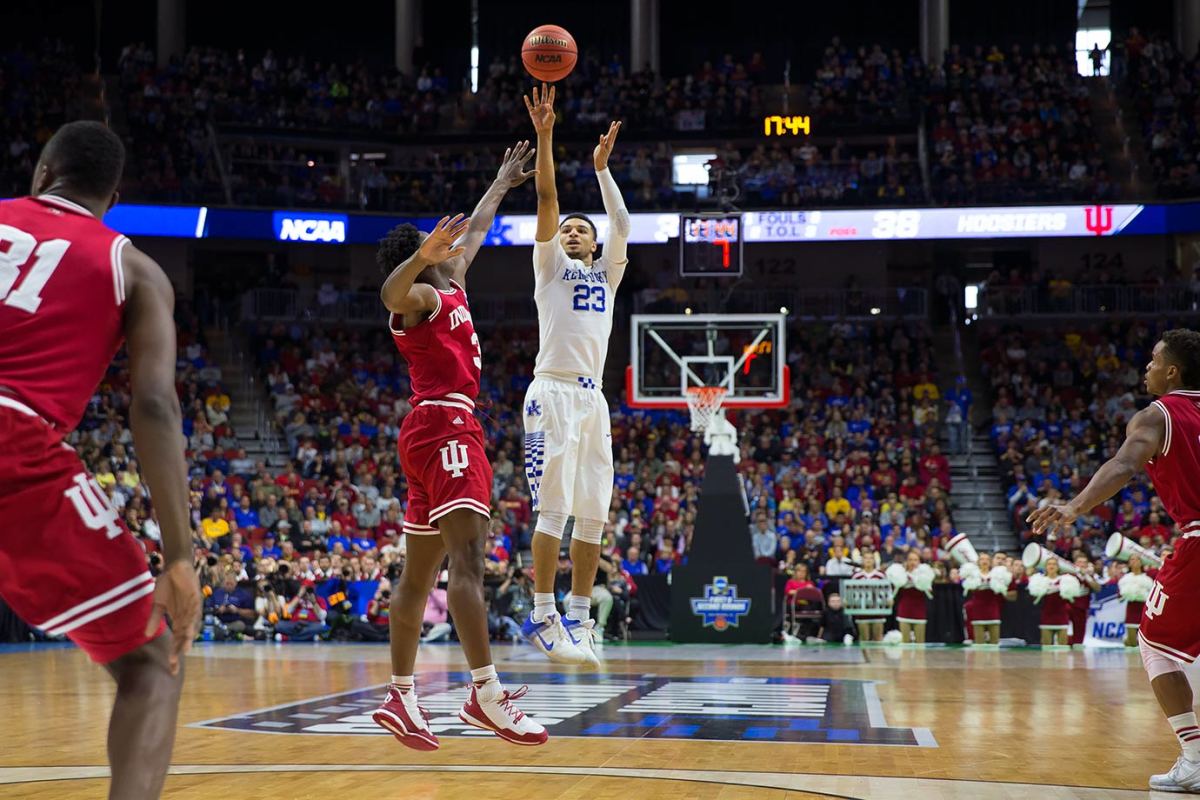
In a different draft class, Murray might go in the 10–15 range. He’s not the most athletic guard in the class, but he gets buckets and scouts love his confidence. His college production, shooting ability and the fact he won’t turn 20 until February give him plenty of value for teams seeking a long-term upside play. His craftiness and ability as a secondary playmaker should let him play a bit of both guard spots. He may slip a little on draft night given teams’ guard depth from picks 3–5, but not too much further.
#5: Kris Dunn, Providence — 6'4", 220 | Guard | Senior
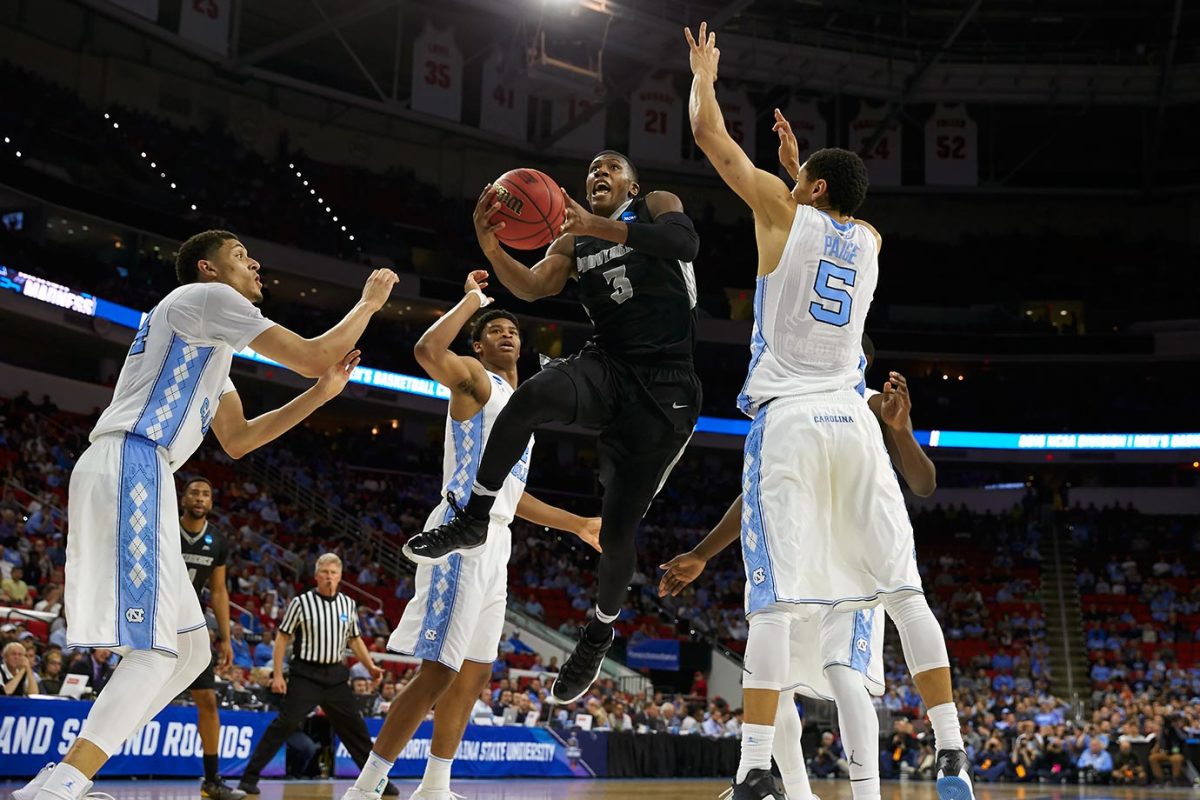
Rumors are heavily linking Dunn to the Timberwolves, and that makes a lot of sense, despite the presence of Ricky Rubio. He’s a Tom Thibodeau type. Dunn should be a plus defender who can run the offense and get to the rim. He’s a great athlete and is one of the most NBA-ready players in the draft. What exactly is Dunn’s ceiling will probably be tied to the development of his three-point shot. He’s the best point guard available, regardless.
#6: Henry Ellenson, Marquette — 6'10", 245 | Forward | Freshman
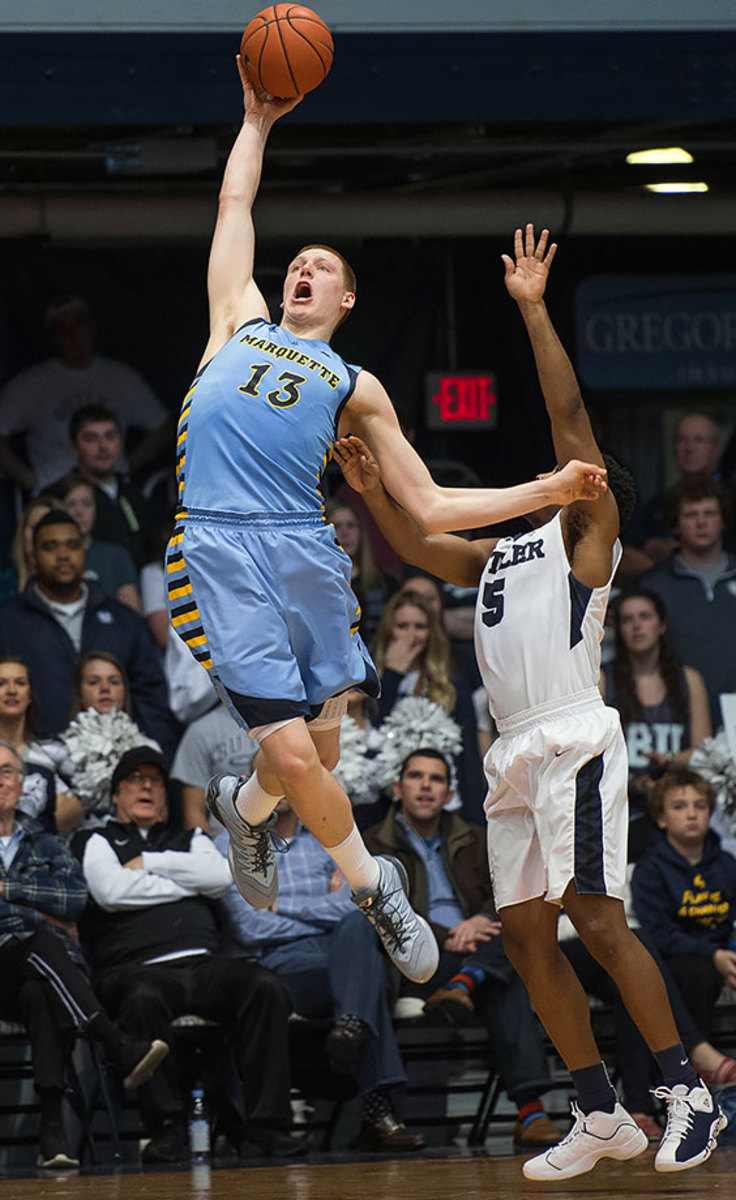
Ellenson has a very wide range of lottery outcomes, probably more than most in what’s already shaping up as an unpredictable first round. There’s no denying his talent offensively, distinguished by his mix of low-post scoring, jump shooting and ballhandling skills. The knock here is he’s not an explosive athlete nor a strong lateral defender, but if you’re playing him at center it could mitigate some of those concerns. True stretch five-men are hard to find.
#7: Buddy Hield, Oklahoma — 6'4", 215 | Guard | Senior
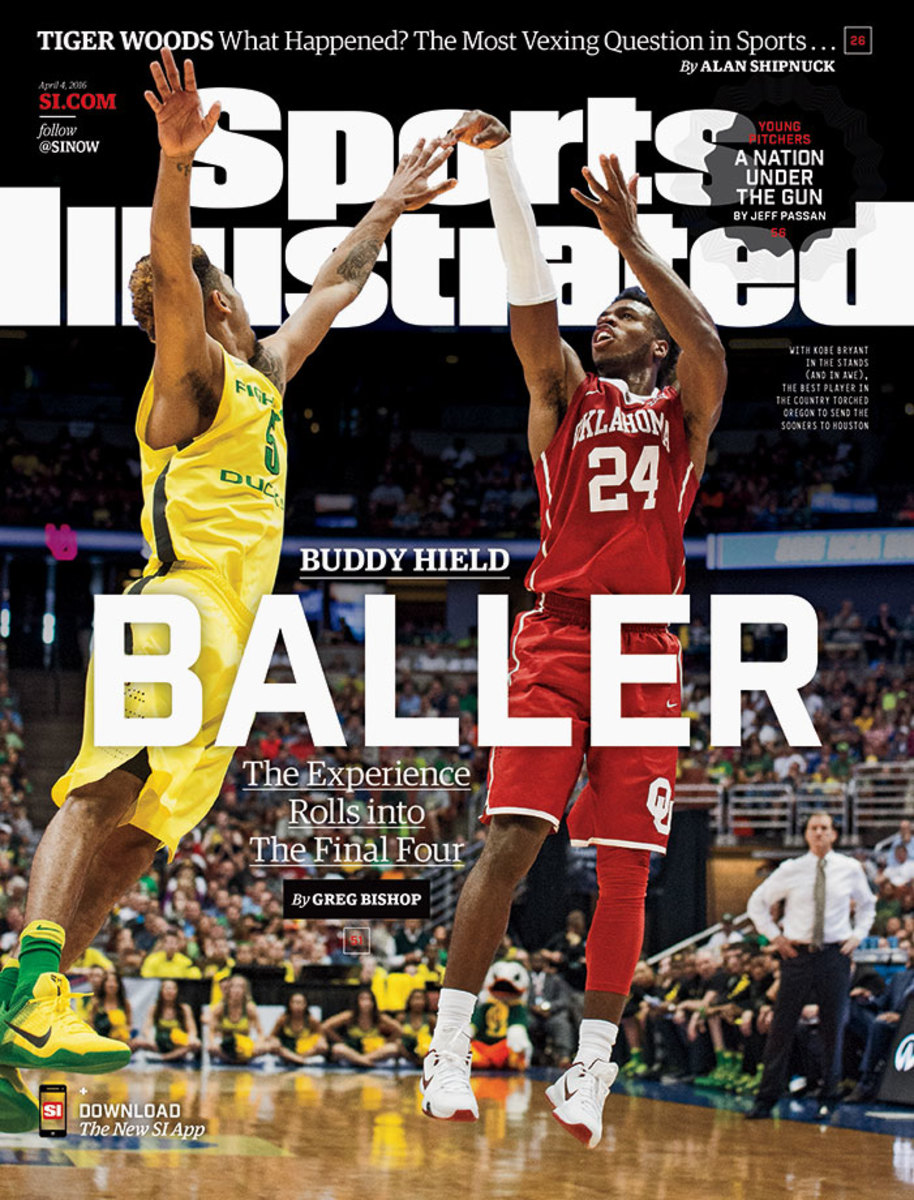
Hield apparently made 85 out of 100 threes in a recent Celtics workout and also told reporters he thinks he’s going to the Lakers. Neither of those two things matter much—we already knew he could shoot, and a leap into the top two would be stunning. Regardless, the elite three-point stroke and an otherwise regular skill-set gives the J.J. Redick comps credence. Though he’s 22 already, the development he showed over four college seasons actually plays in his favor with some scouts. Hield should be able to help you right away.
#8: Marquese Chriss, Washington — 6'10", 233 | Forward | Freshman
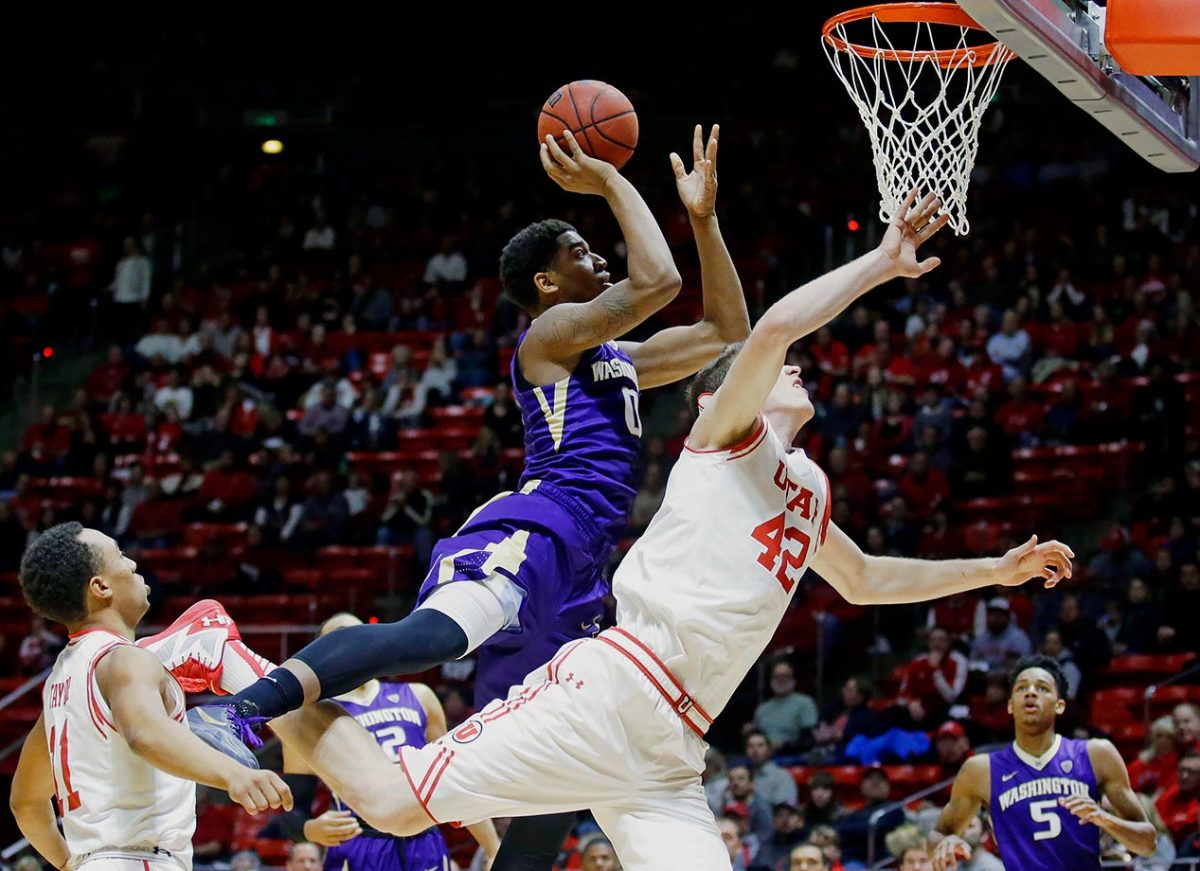
Some mocks have Chriss going in the top five based on his potential alone. That’s justifiable, but around here feels like more of his range. He’s got almost every tool you can ask for, but also hadn’t played much high-level basketball before coming on late at Washington. He almost definitely doesn’t know how good he can be. We’ve seen guys with similar profiles and better pedigrees float in and out of the league. As a stretchy, bouncy, scoring four-man, Chriss will be a sexy pick, but he’ll have a greater learning curve than most.
#9: Jakob Poeltl, Utah — 7,1", 240 | Forward/Center | Sophomore
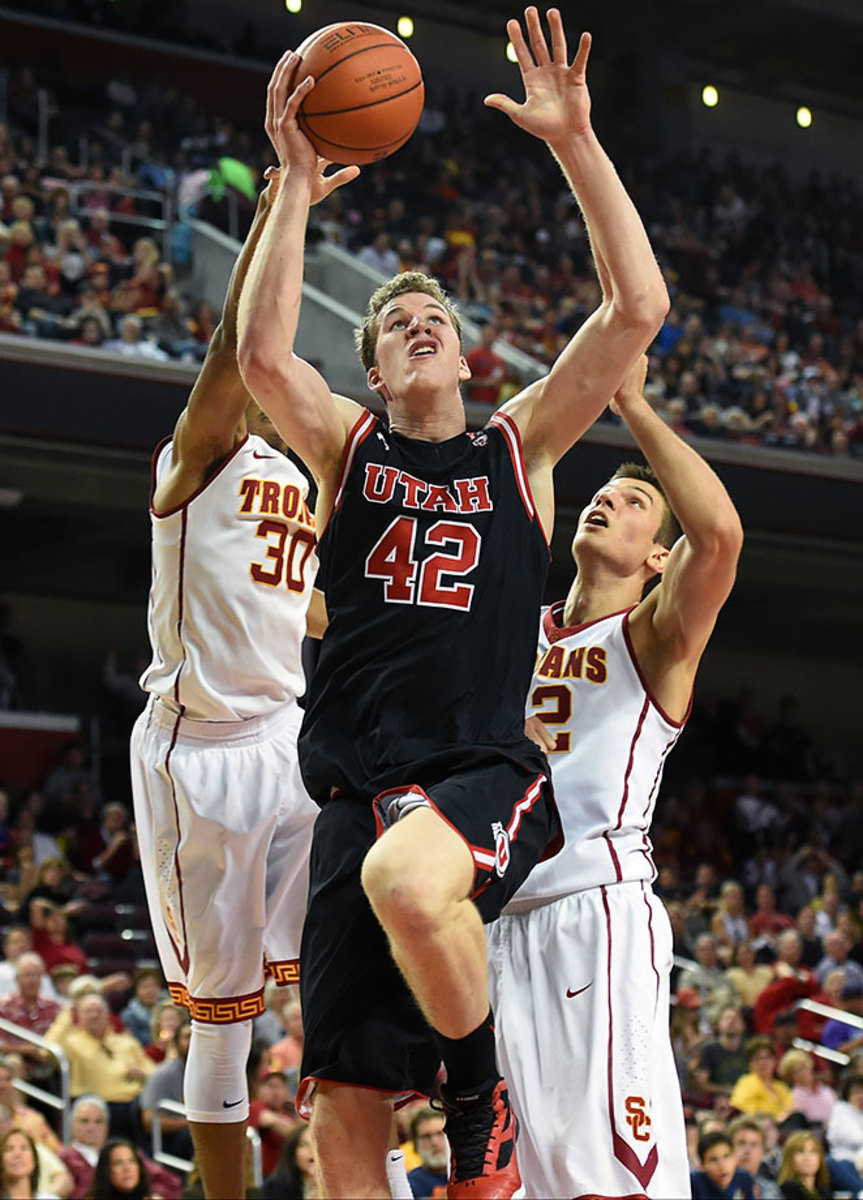
Poeltl’s a throwback big, and it’s almost working against him in the court of public opinion. Also working against him is the fact that not many teams in the top 10 really need a center. But look, he’s massive and has a well-developed post game, and there will be a place for those types of guys even as the league begins to skew small. He got noticeably better from freshman to sophomore year of college. Big men always take time. He’s a fairly safe pick in my book.
#10: Jaylen Brown, Cal — 6'7", 223 | Forward | Freshman
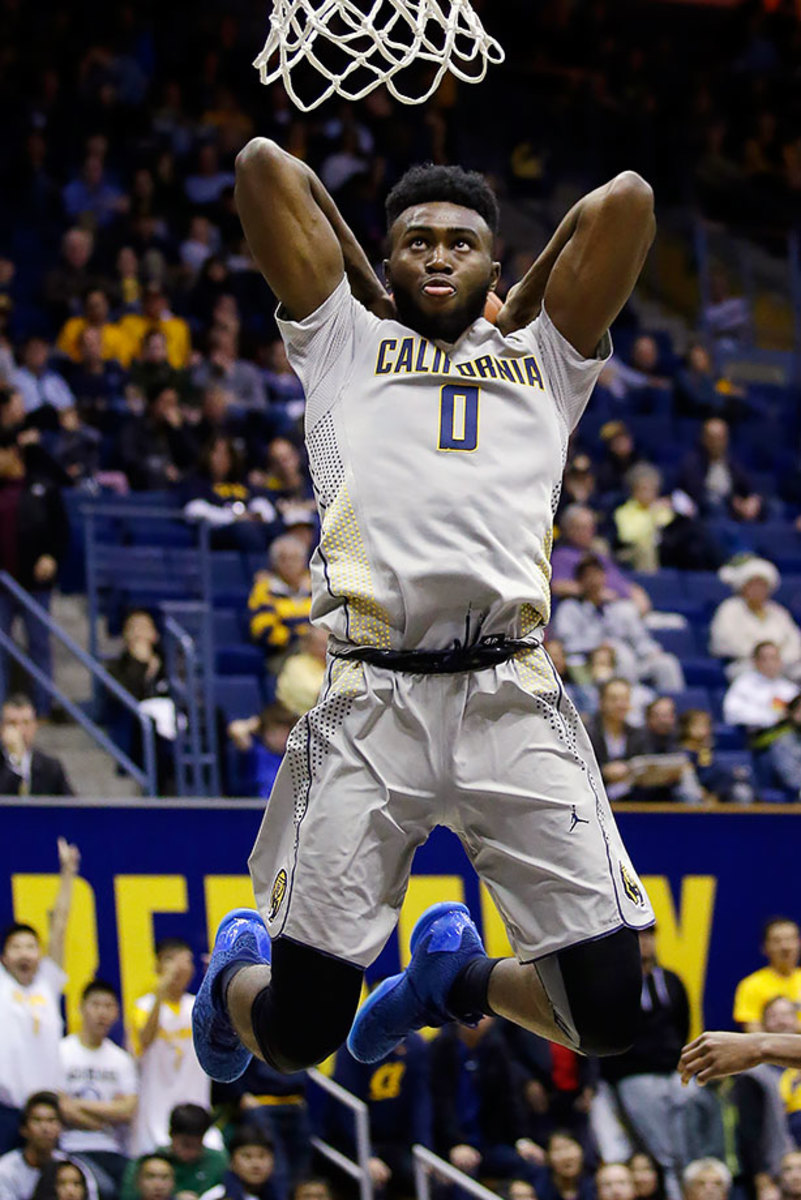
Something here just doesn’t quite move the needle like it should. Brown has every athletic tool in the book, but had a well-publicized rough go at Cal and probably lacks the basketball acumen to contribute early on. Big potential means he could conceivably go in the top five, but the opportunity cost could be high. He’s a smart kid, but can also overthink the game. One scout put it like this: “At least Gerald Green came in with a wet jump shot.”
#11: Timothe Luwawu, Serbia — 6'7", 205 | Guard/Forward | 20 years old
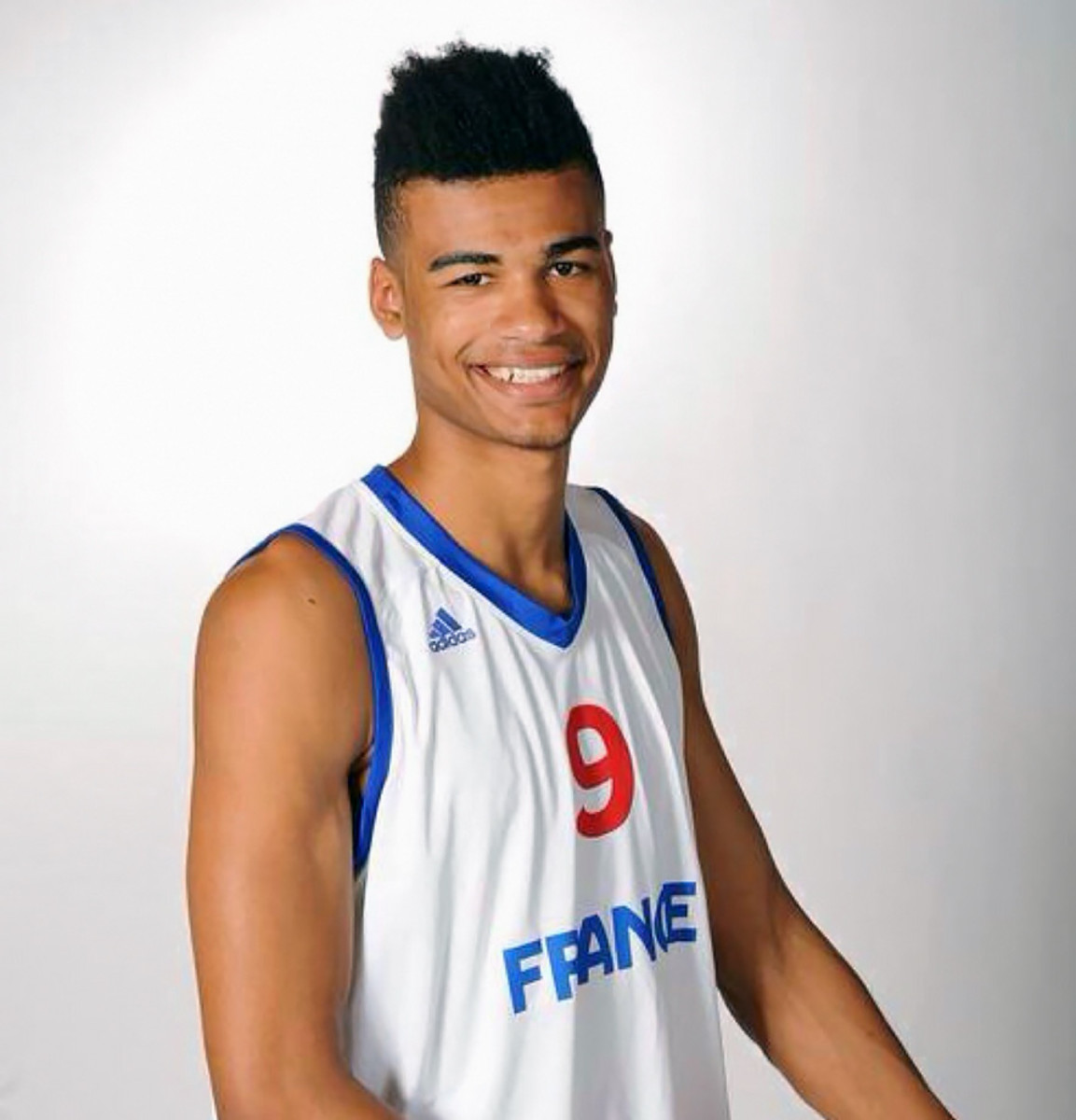
Two-way wings are always a valuable commodity, and Luwawu’s one of the best ones in a thin class. He’s a highlight-caliber athlete with a wingspan over 7’0” feet and shouldn’t slip too far from here. Scouts I spoke with felt he was closer to NBA-ready than most. Luwawu’s got a more diverse offensive game than just his dunk reel, and has made big strides in the past year. There’s a lot to like with him.
#12: Deyonta Davis, Michigan State — 6'10", 240 | Forward | Freshman
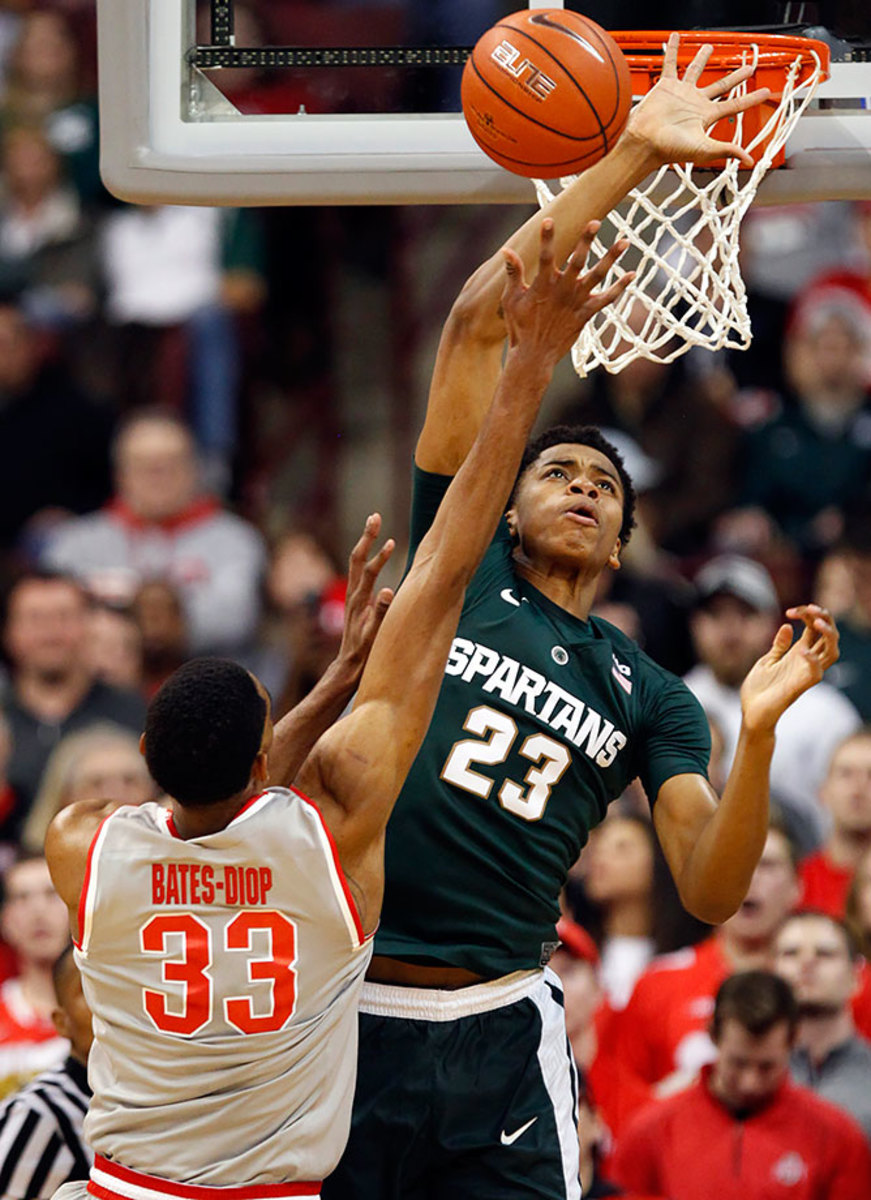
Everything is about projection with Davis. His length, quick feet and great shot-blocking instincts portend defensive success. With improving touch and a semblance of a jump shot, you can mold him on offense, too. He played a good bit for Tom Izzo, which matters, but there’s not much of a sample size or history of production to bank on. He’s a long way away from ready, but then again, there are a lot of guys in that same boat this year.
#13: Domantas Sabonis, Gonzaga — 6'10", 240 | Forward | Sophomore
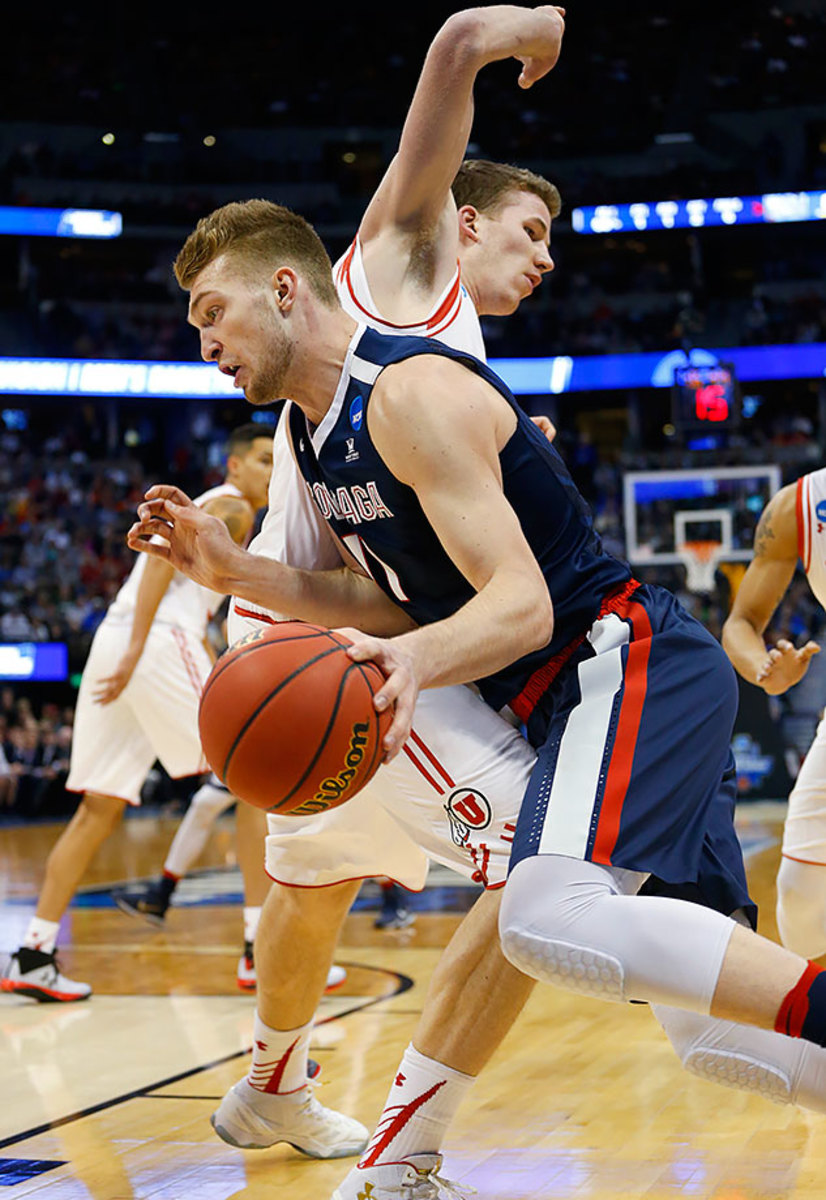
Sabonis plays exactly how you’d think the son of a Hall of Fame European big man would. Great fundamentals, soft hands, high motor and IQ. His Gonzaga production backs things up well. The issue is his lack of explosion and length, which raises questions about exactly what translates at the next level. Mid-first round and onward, Sabonis offers some safe value. There’s speculation he has a promise from a team in the late lottery.
#14: Furkan Korkmaz, Anadolu Edes — 6'7", 175 | Guard | 18 years old
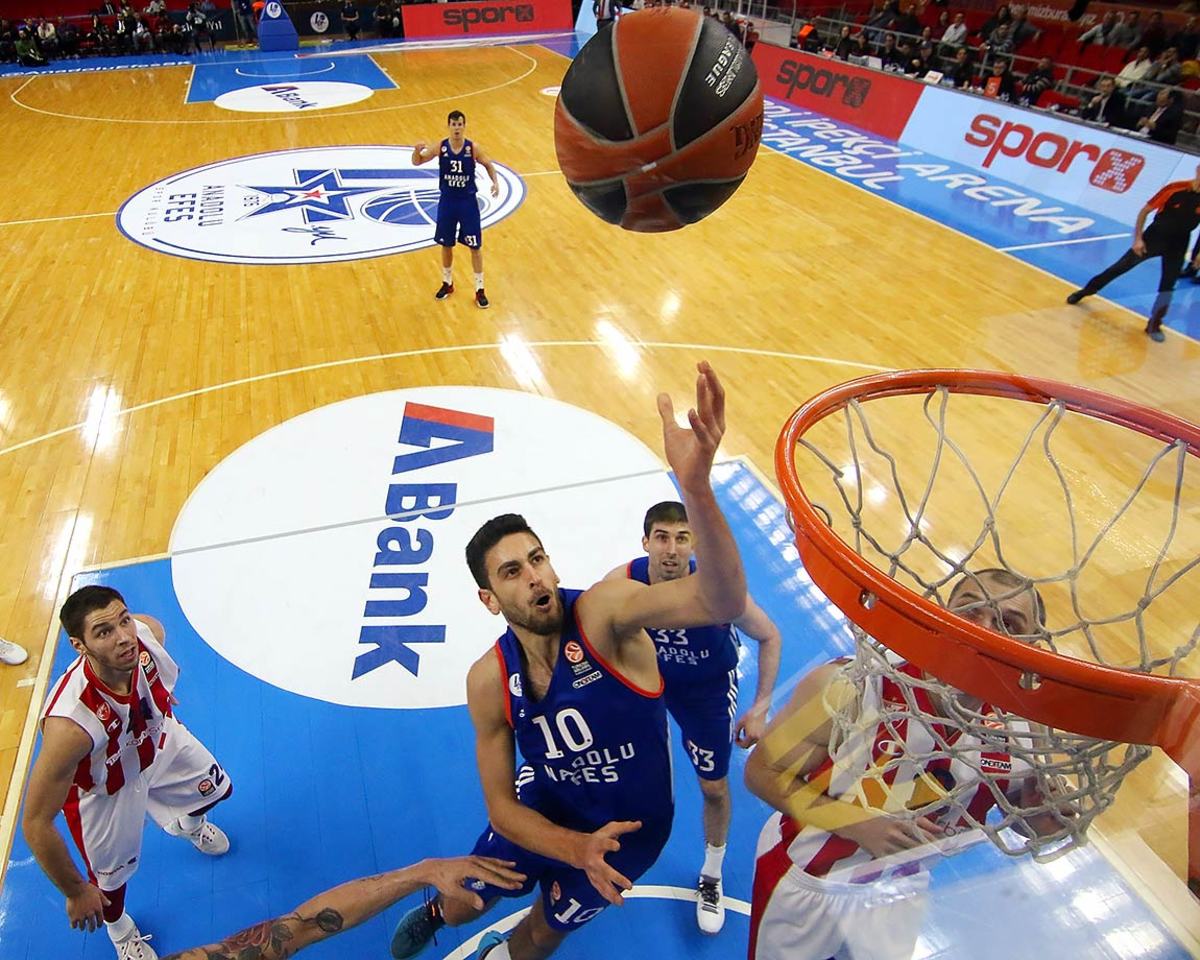
The combination of athleticism, shooting and youth make Korkmaz a very interesting stash candidate. He’s starred for Turkey at youth levels and shown flashes while playing with Efes’s senior team, but it’s worth noting how relatively small his sample size is against elite competition. He’s a long-term investment, not an immediate-impact selection.
#15: Skal Labissiere, Kentucky — 6'11", 216 | Center | Freshman
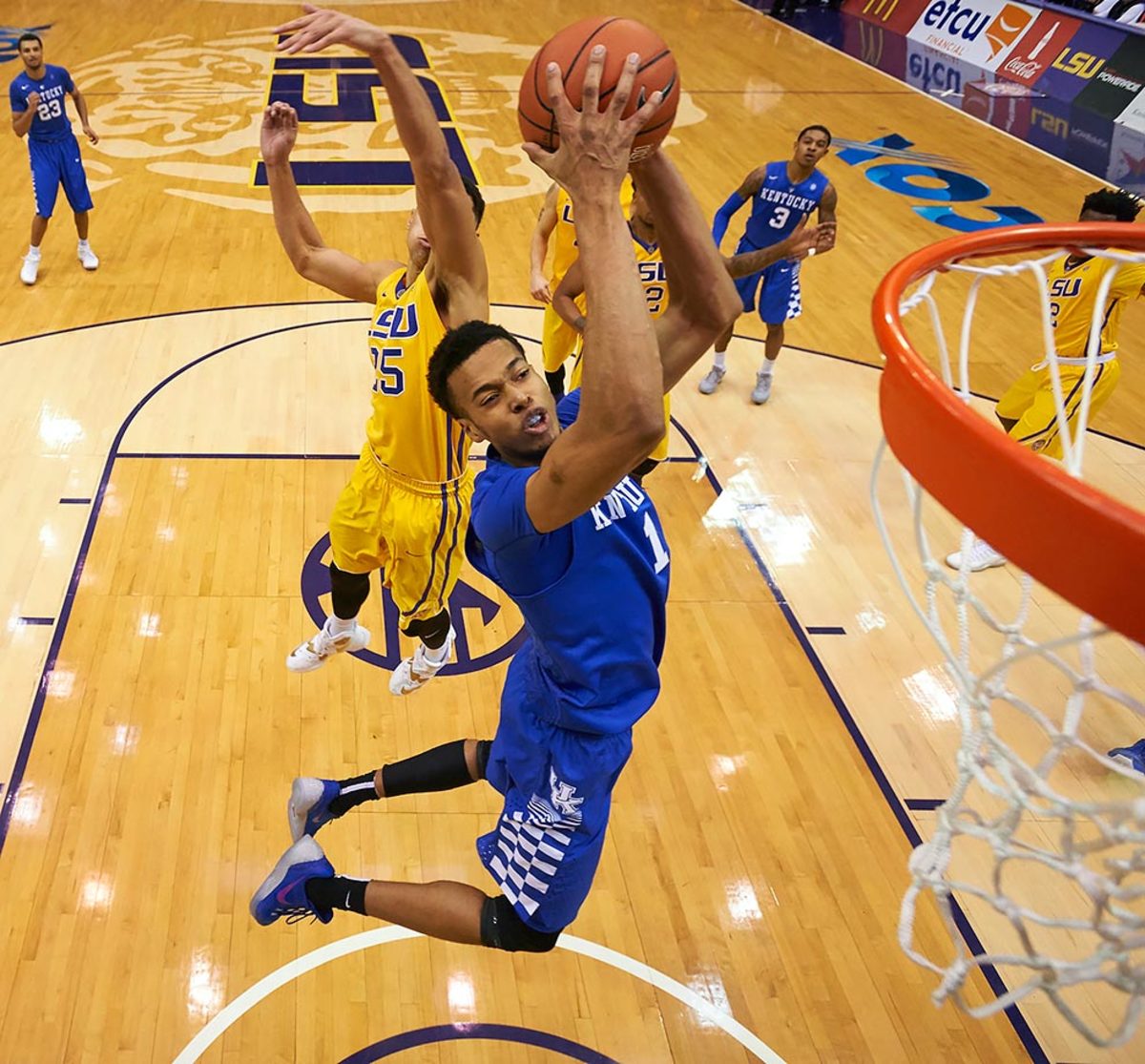
I have a hunch Labissiere slides toward the late teens on draft night. There’s just too much riding on projection with an older prospect who’s behind developmentally and with little history of consistent production. He’s big and might be able to shoot it and block shots, but he’s already 20 and has filling out left to do. Labissiere missed his junior season of high school with a back injury that has left lingering questions for teams. He could be a worthwhile gamble for teams with the time and resources to develop him. But, as one scout put it: “It’s really hard to play in the NBA not knowing how to play basketball.”
#16: Denzel Valentine, Michigan State — 6'6", 210 | Guard | Senior
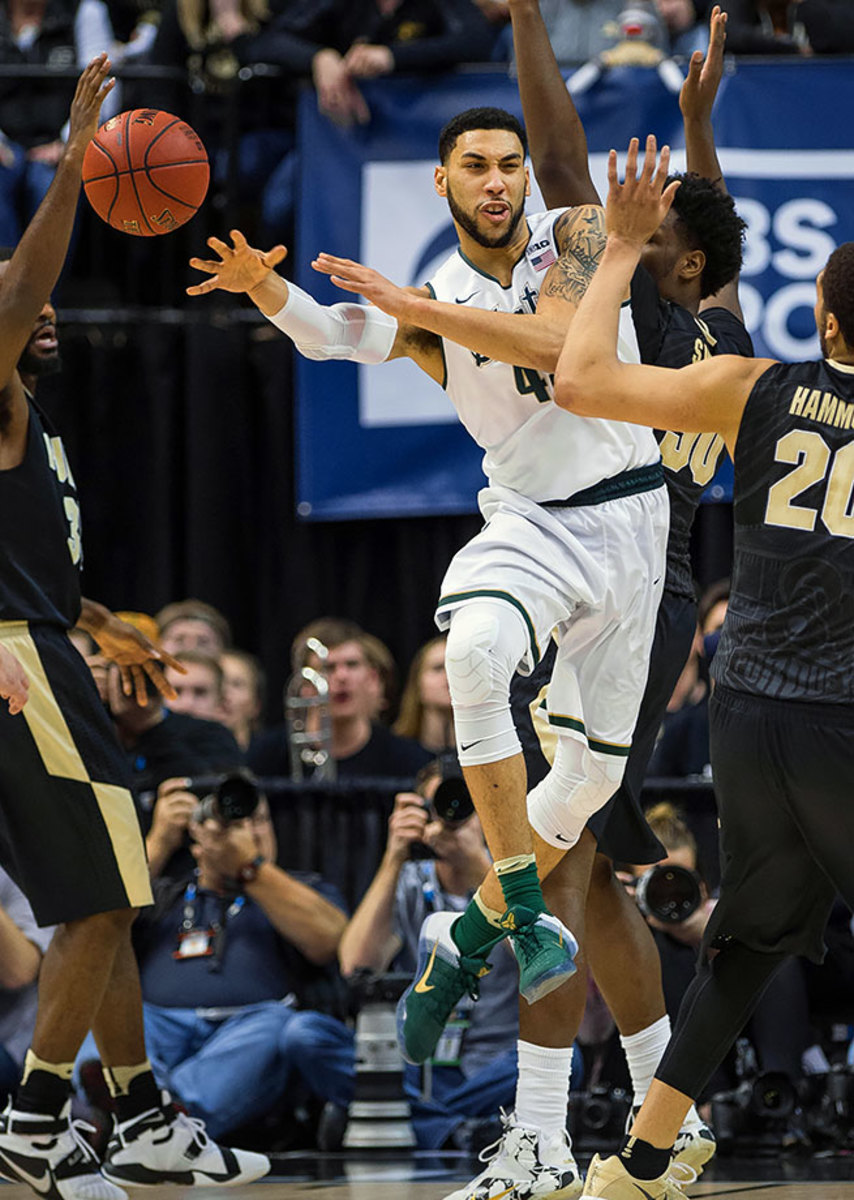
Valentine’s production (19.2 points, 7.5 rebounds, 7.8 assists) was outstanding last season, and his feel and playmaking help balance the lack of eye-popping athletic measurables. He won’t play the same ball-dominant role as a pro, but you’re buying him as a secondary ballhandler who can space the floor and hoping he catches up defensively. Teams have concerns about the condition of his right knee, which could cause him to slip a bit on draft night.
#17: Demetrius Jackson, Notre Dame — 6'1", 220 | Guard | Junior
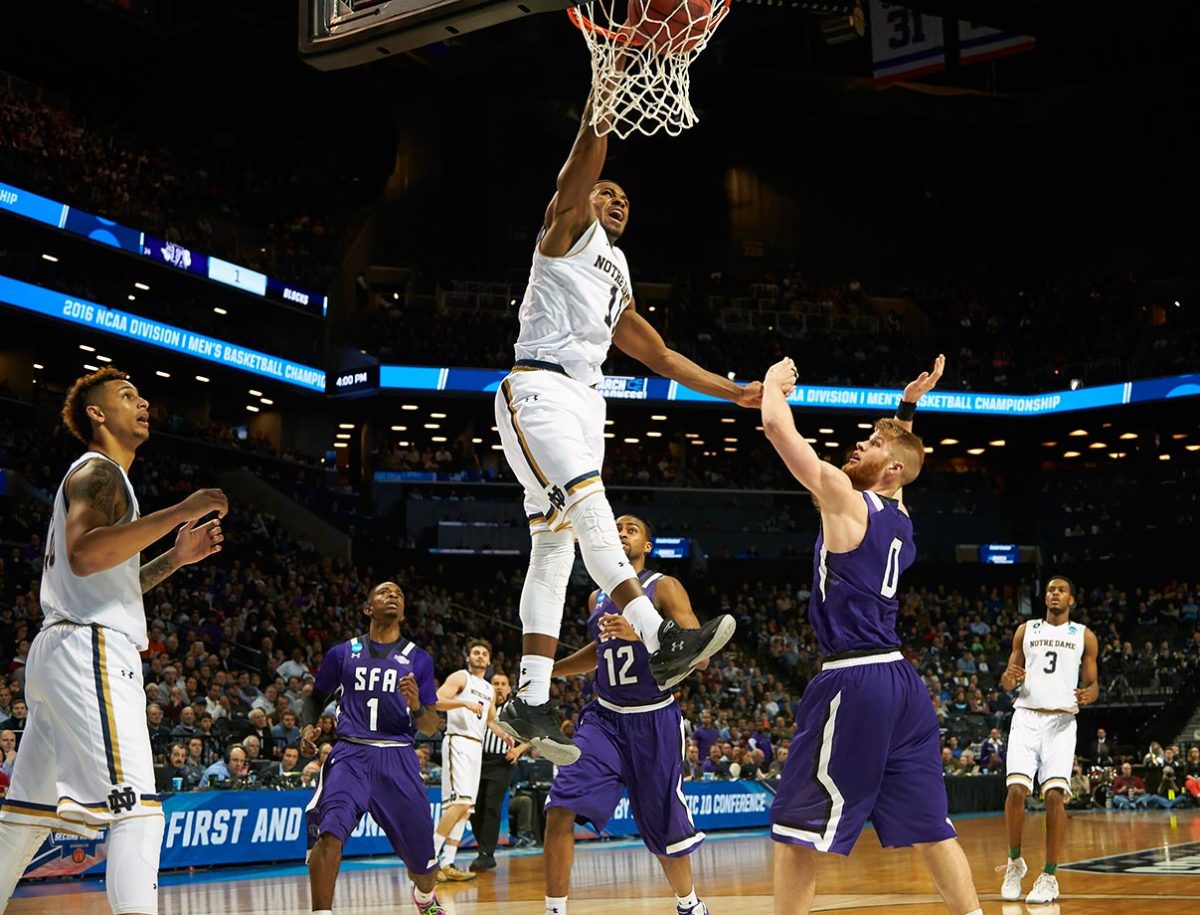
Jackson is tough and extremely athletic and has a good chance to be the second point guard drafted. He’s coming off a strong year at Notre Dame, but his shooting percentages dipped as he shouldered more of the scoring load. Skill-wise, he’s somewhat a master of none. His actual production will have to catch up to his tools. Scouts wonder if he’s cut out to be more than a reserve long-term, but he has decent value in this range.
#18: Wade Baldwin IV, Vanderbilt — 6'3", 195 | Guard | Sophomore
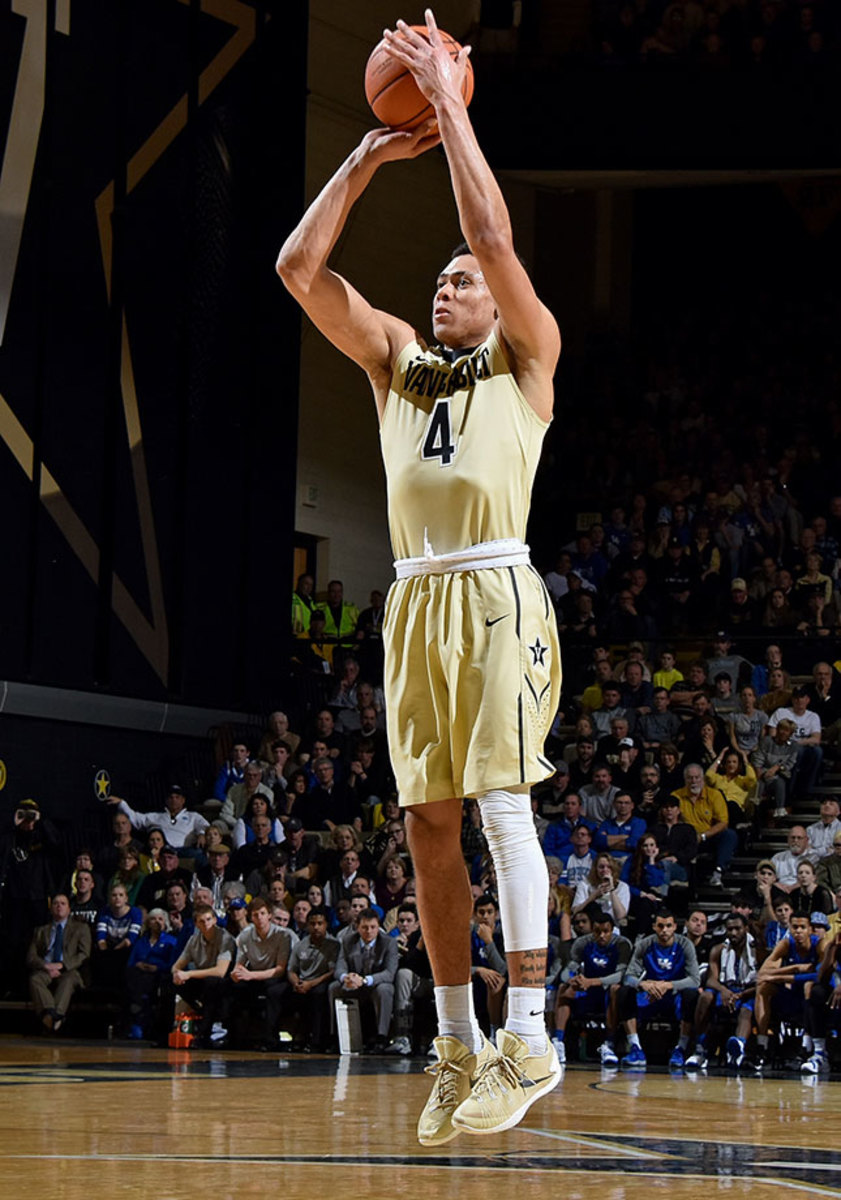
Baldwin’s combine measurements—6' 4" with a 6' 11" wingspan—certainly validated his case as a defensive stopper with a chance to be more. His offense hasn’t sold some scouts, and he’s not a natural point guard in the purest sense, but he can hit a shot and could perhaps be better suited for a lower-usage role. Multiple scouts have cited his tendency to overthink and get in his own way. Still, his defensive potential gives him a relatively high floor.
#19: Ante Zizic, Cibona Zagreb — 6'11", 240 | Center | 22 years old
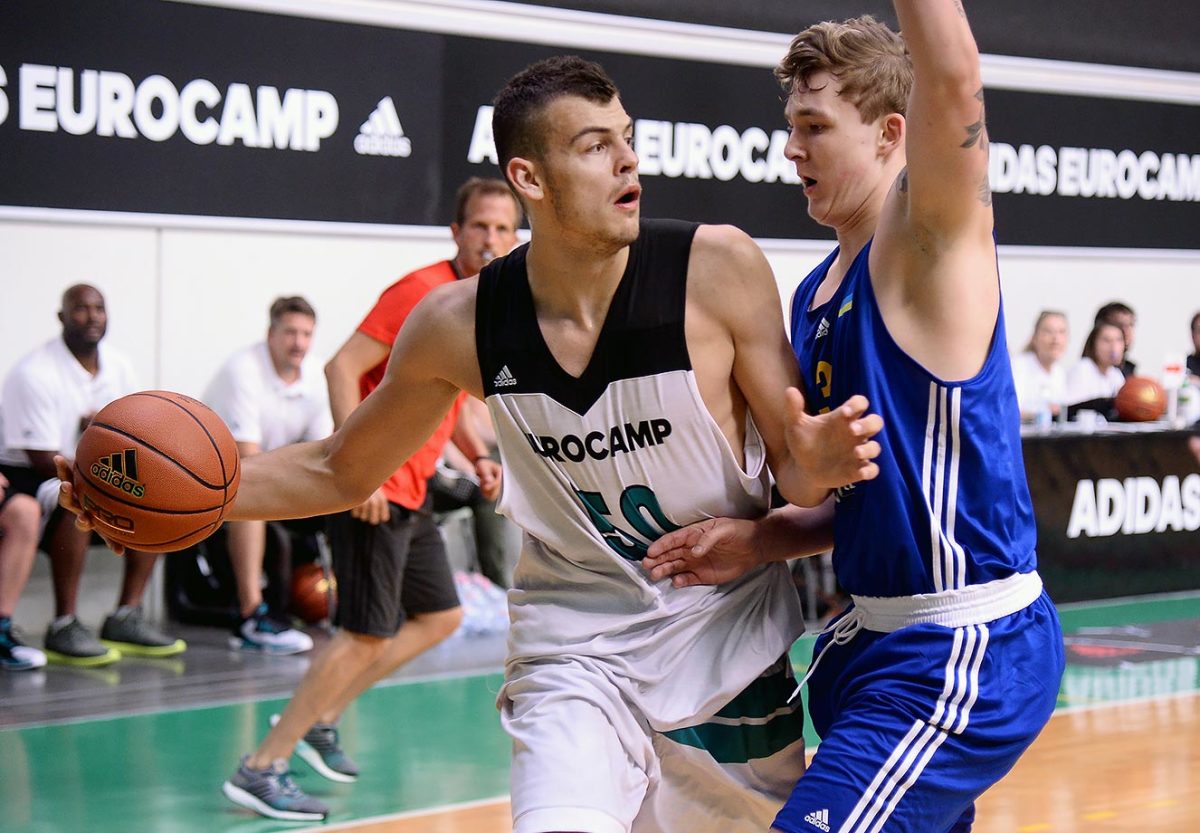
Near the top of the list among stash candidates is Zizic, a garbage-man type who knows his role, works hard on the glass and is physically mature enough to accomodate his preferred style. Impressive production as a teenager in the Adriatic League (13 points, eight rebounds per game) definitely stands out. Zizic’s skills have a ways to go, but it’s easy to see him as a nice complementary piece on the inside.
#20: Dejounte Murray, Washington — 6'5", 170 | Guard | Freshman
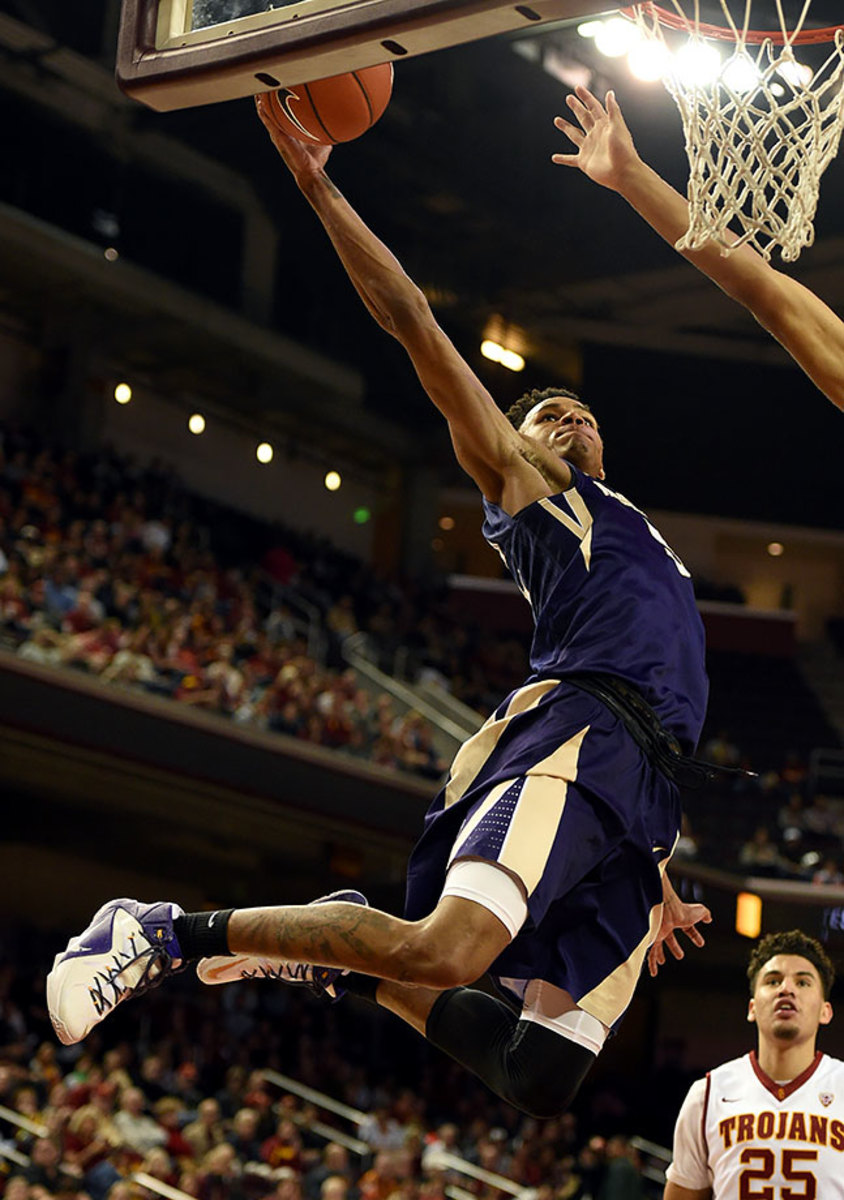
One optimistic scout calls Murray, simply, “a baller.” “He does some things you can’t teach,” another says. This is the crux of his intrigue, and while he’s going to need some time, he’s a definite upside play as a scoring combo guard. His shot is a work in progress. On talent and projection you can justify him in the late lottery, but his range appears pretty wide.
#21: Taurean Prince, Baylor — 6'7", 220 | Forward | Senior
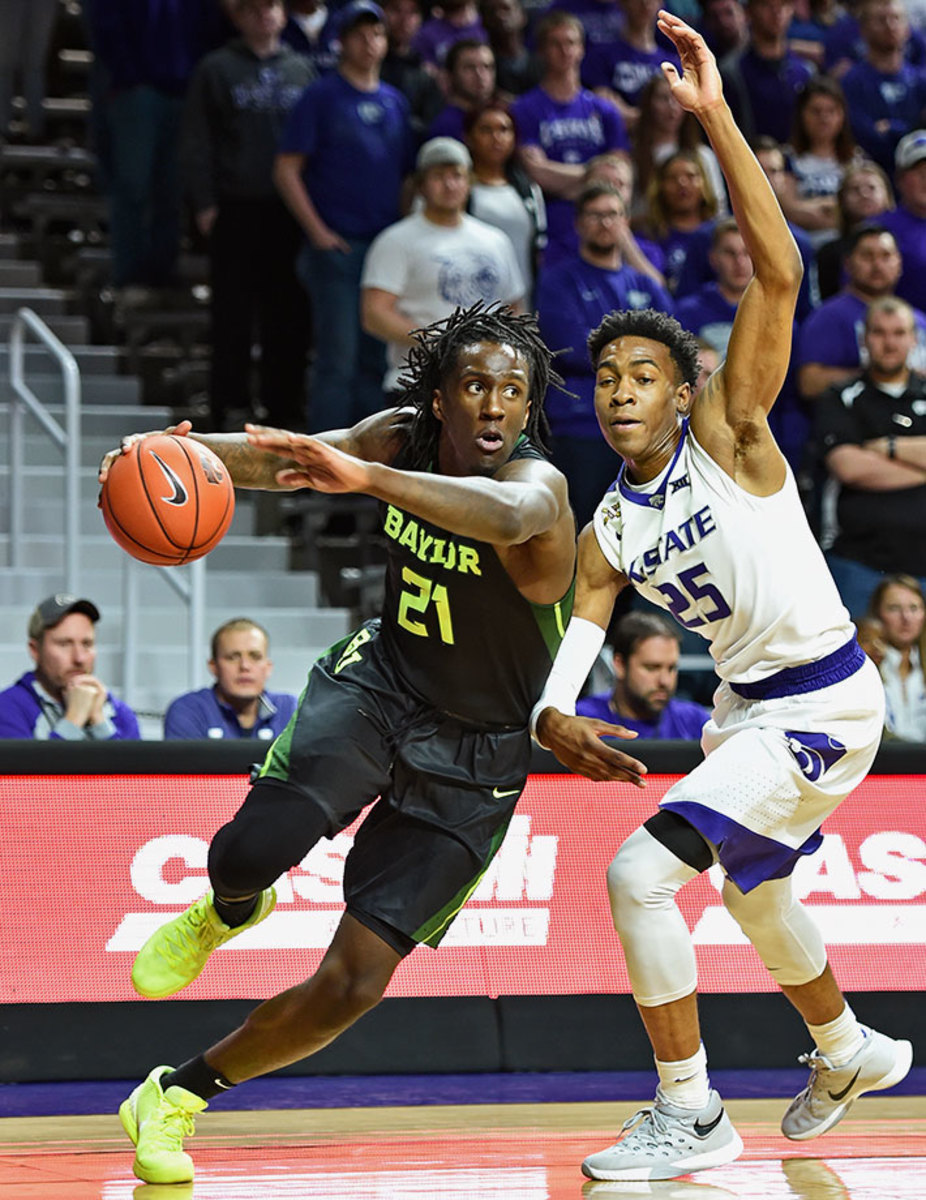
Prince did a little bit of everything for Baylor, with a game one scout described as “unconventional.” He’s long and strong and should be able to cut it athletically, and while he struggled some as a senior when tasked with making plays on the ball, odds are he won’t be asked to do as much of that in the NBA. Although he lacks an elite skill to hang his hat on, he should be able to step into a rotation pretty quickly.
#22: Tyler Ulis, Kentucky — 5'9", 160 | Guard | Sophomore
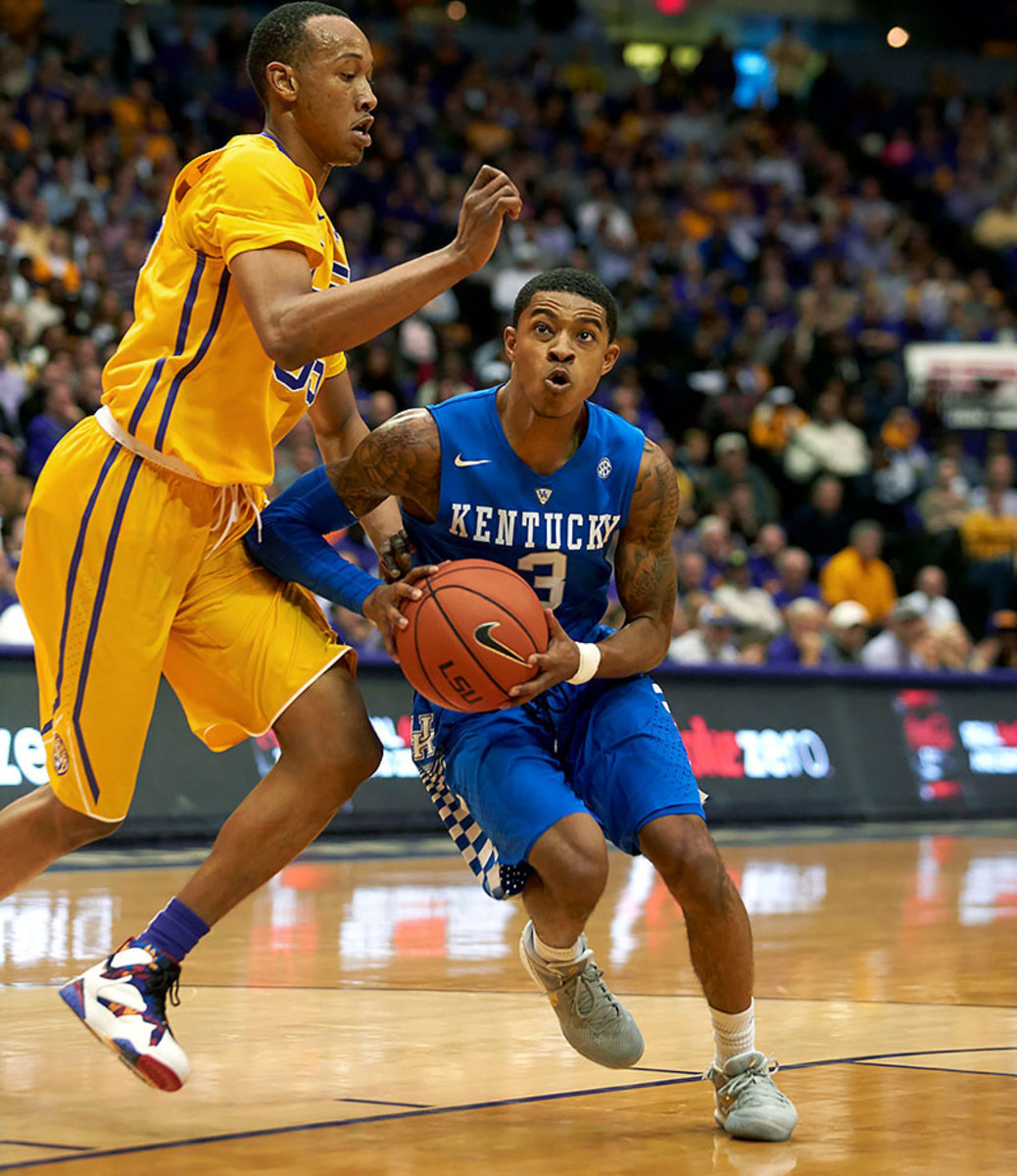
Ulis has solidified himself as a mid- to late-first rounder, and he’s probably the most instinctive passer among available guards. He won’t make many mistakes, and he’ll make everyone around him better. “Three inches taller,” one scout says, “and he would be the best point guard in this draft.” Medical concerns about his hip and his extremely thin frame gives some reason for pause.
#23: Cheick Diallo, Kansas — 6'9", 220 | Forward | Freshman
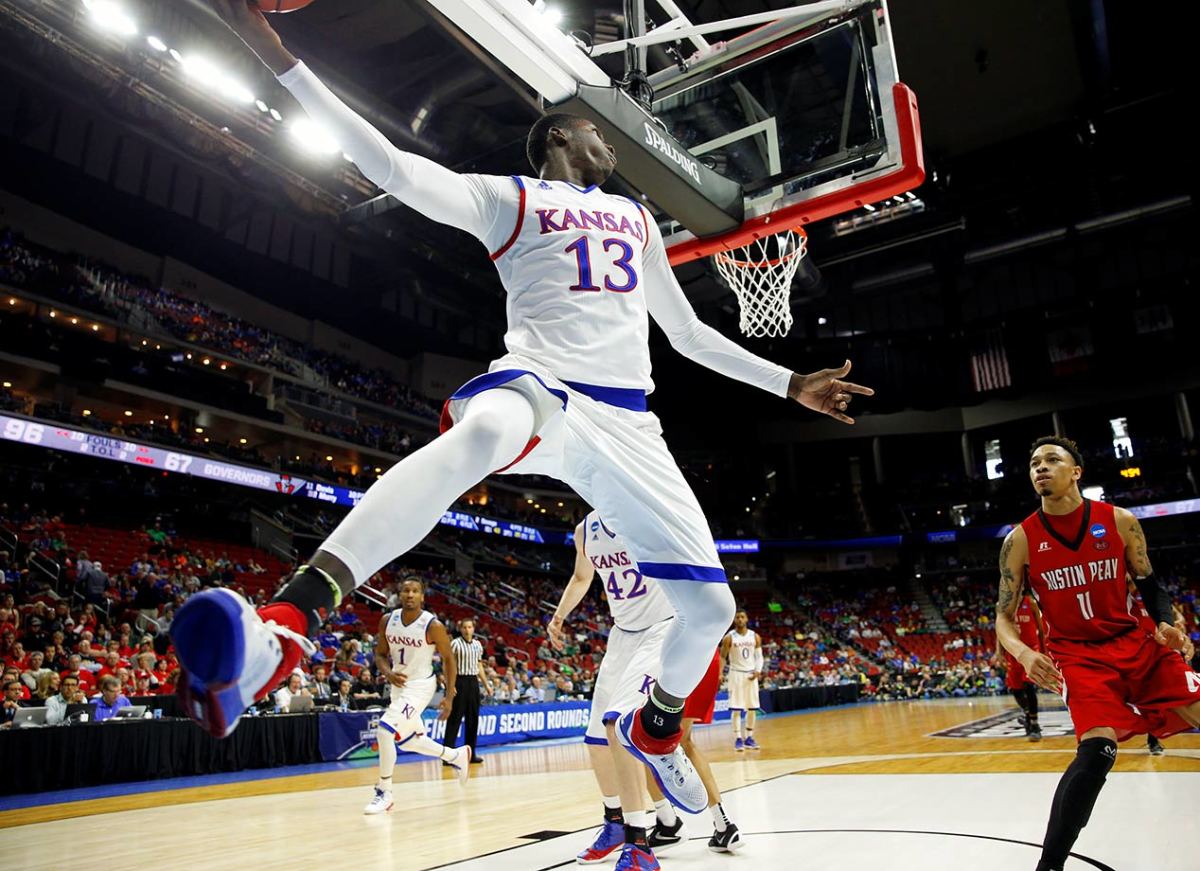
Diallo is bouncy, aggressive and has a reputation for playing extremely hard. With added seasoning, he should become a useful energy big.His considerable length helps compensate for his lack of height. He’s not a scorer beyond the dunks and hustle bucket, which limits his upside. Diallo was buried in the Kansas rotation, but will be granted more patience from here.
#24: DeAndre Bembry, St. Joseph — 6'6", 207 | Forward | Junior
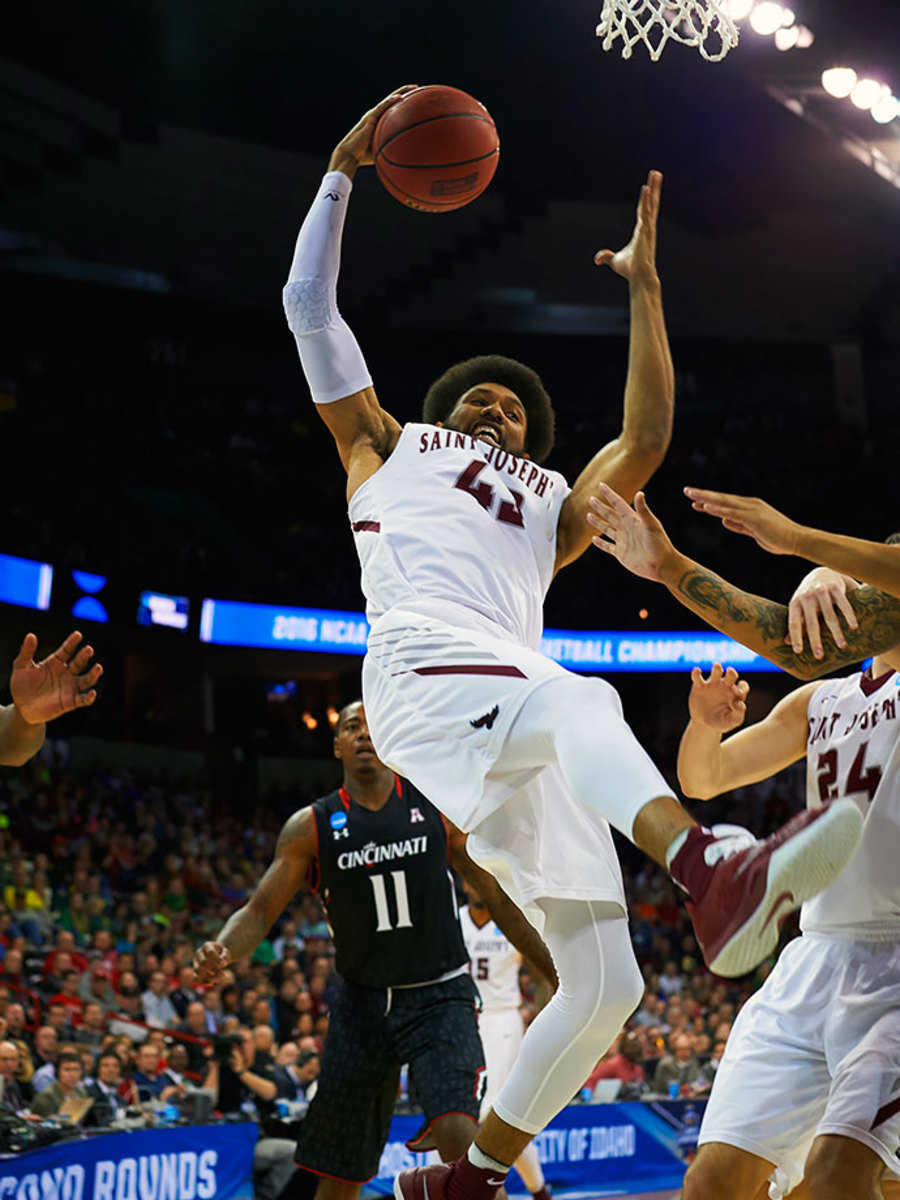
Bembry’s one of those players who just gets it. He’s got a mature game and the college production to back it up. He’s low-risk in that you can see him meshing into any offense with his playmaking and versatility. The major question is his three-point shot, but it’s not broken and if you play him alongside shooters it should alleviate some of those spacing concerns. Bembry could make an impact early in his career and help a playoff team next season.
#25: Ivica Zubac, Spain — 6'9", 265 | Forward | 19 years old
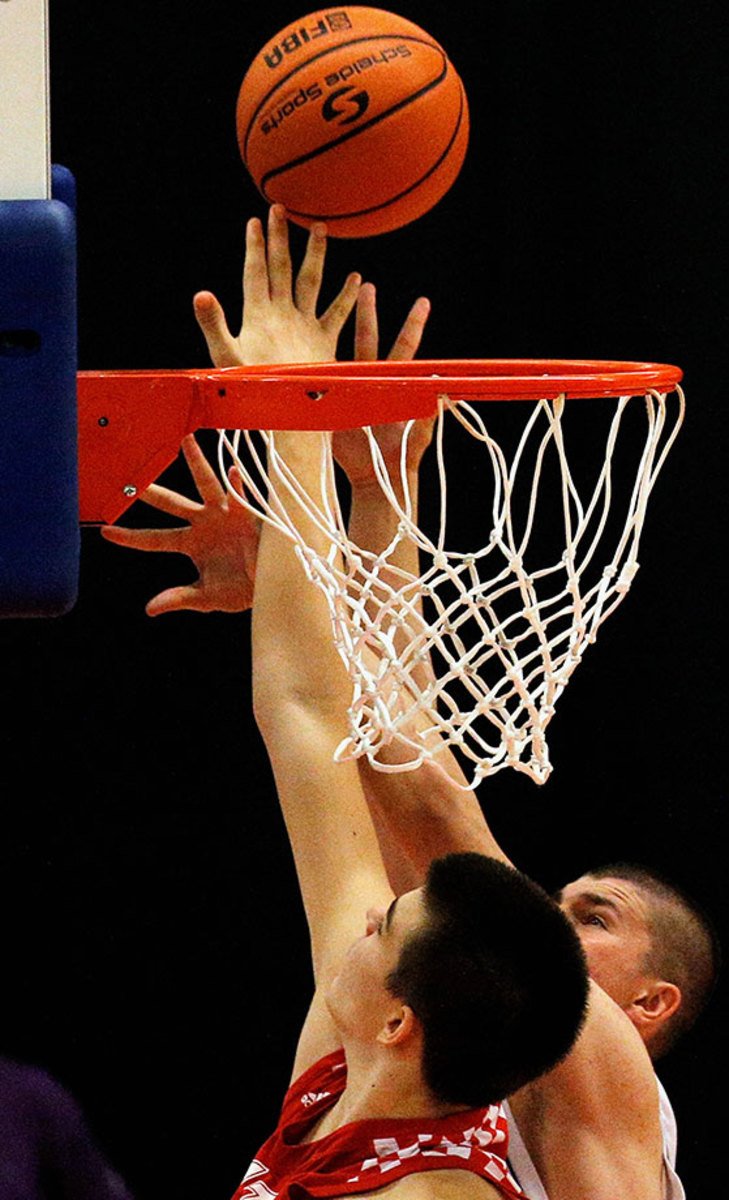
Zubac turned heads with insane production at the 2015 FIBA U19 Worlds (33.7 PER, 17.6 points, 7.9 rebounds). He’s a strong finisher with a great frame and nice post-up game. Zubac has potential to cut it defensively and should be a fit at the next level as a screen-setter and rim-runner. He apparently prefers to come over to the NBA next season, but can justify a place on someone’s bench given his tools and possibilities. If you can stash him, even better.
#26: Thon Maker, Orangeville Prep — 7'0", 219 | Center | 19 years old
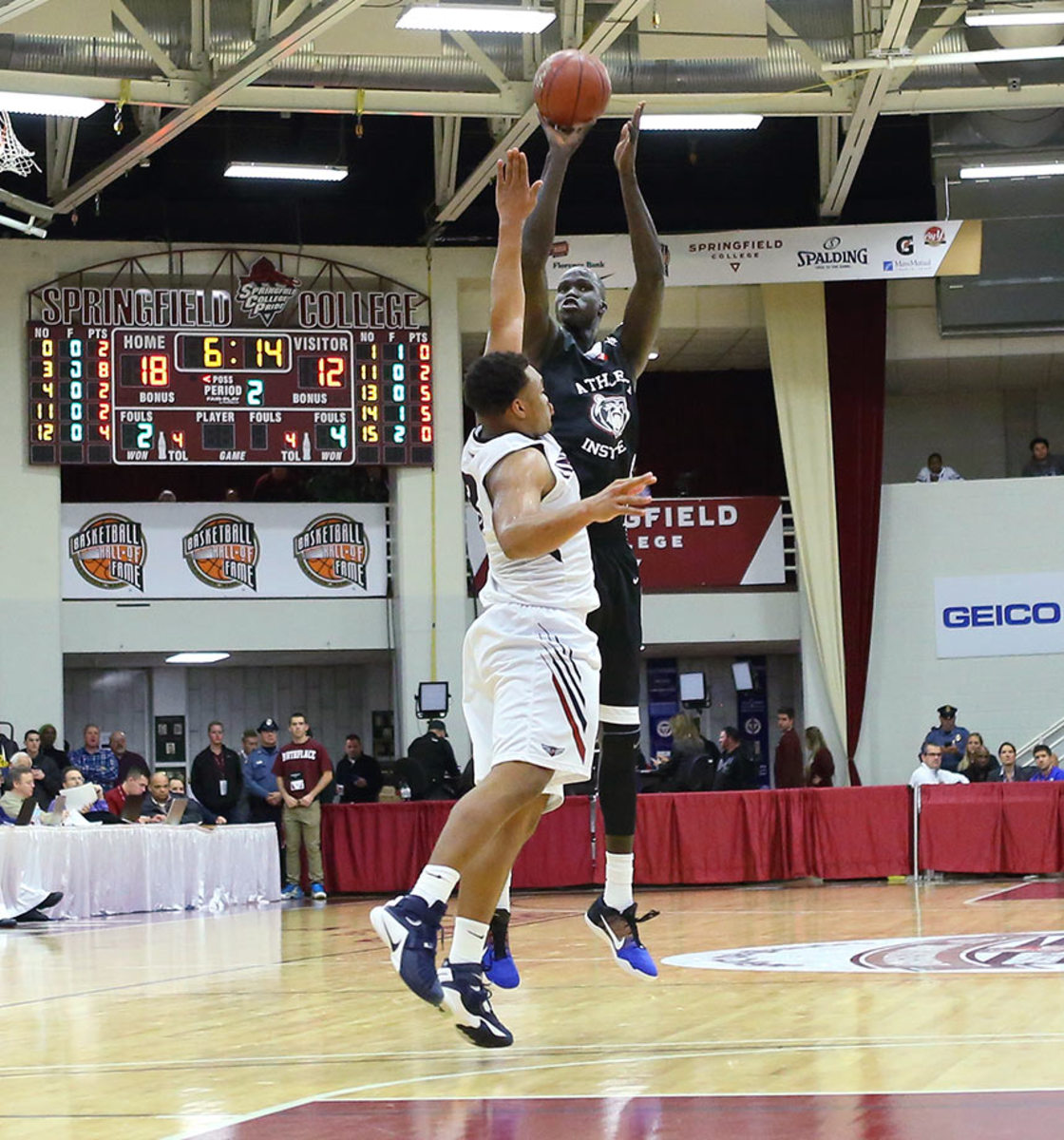
Opinions remain mixed on Maker, but it seems scouts are beginning to come around a bit. He’s a legit 7-footer, long and mobile, but, of course, rail-thin. People like his intangibles, yet there are still a ton of ifs when figuring out which of his strengths actually translate to the league. He might be an athletic energy big who can step out and make a shot, he also may never be able to bang inside. Maker has been working out against Brandon Ingram leading up to the draft and apparently held his own. There’s a wide range of outcomes here.
#27: Juan Hernangomez, Spain — 6'9", 225 | Forward | 20 years old
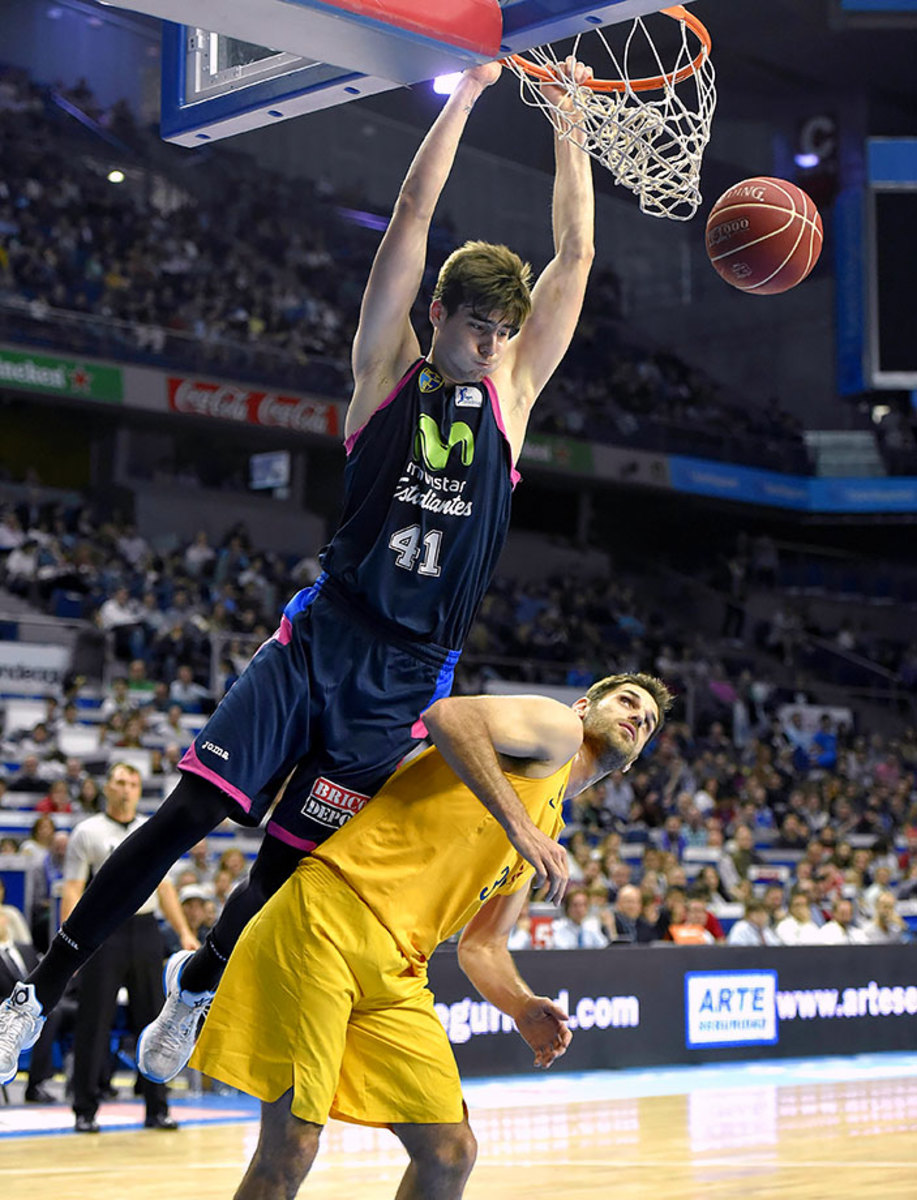
Hernangomez enjoyed a strong season in Spain and won’t turn 21 until September. A skilled stretch-four who could eventually play some three, he’s comfortable getting his offense spotting up and finishing inside. One scout cited Hernangomez’s high energy level and deceptive leaping ability. It helps he’s already playing legit minutes and producing in a very tough league. Think late first round.
#28: A.J. Hammons, Purdue — 7'0", 281 | Center | Senior
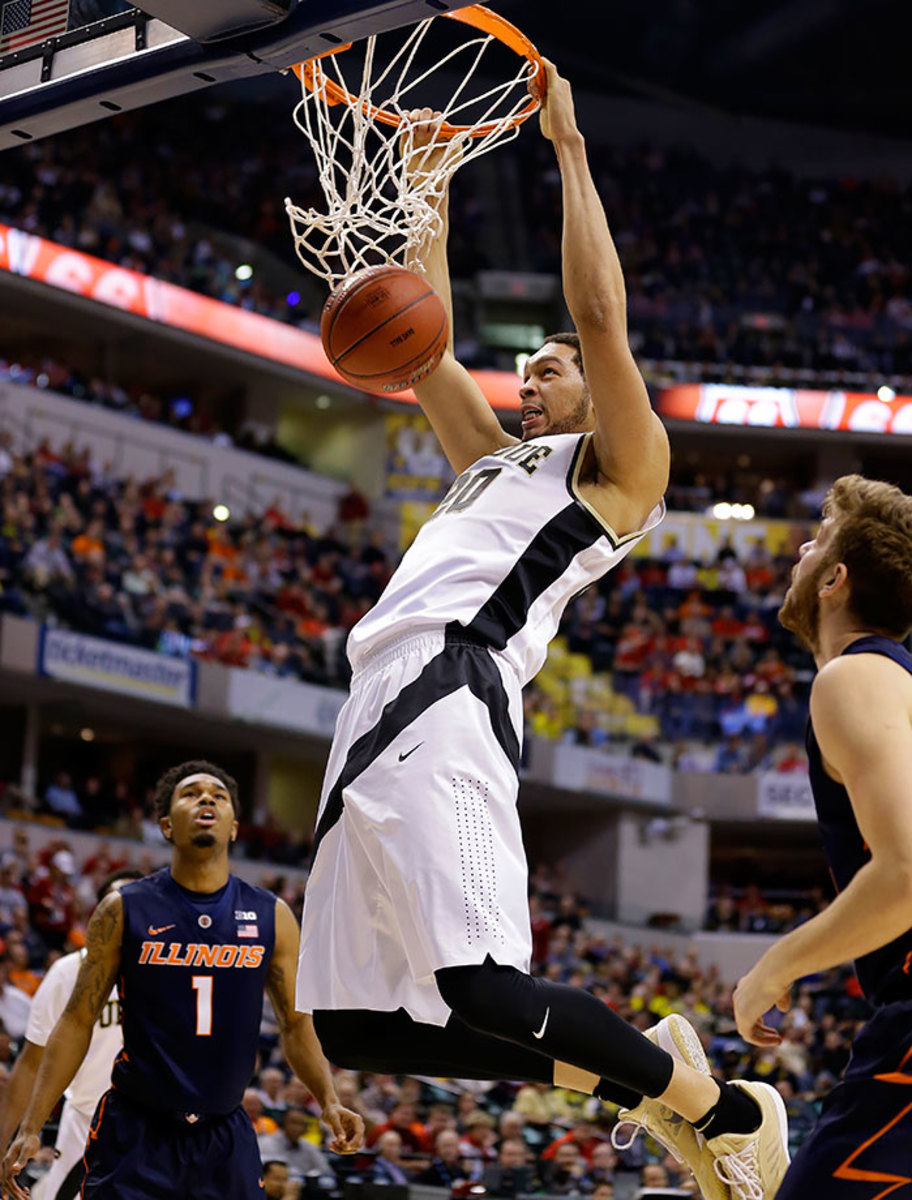
There’s no reason Hammons shouldn’t be a useful rim protector from day one. He’ll turn 24 soon, which will keep him out of the upper reaches of the draft, but he’s an NBA-level talent with an improving offensive skill level and pro-ready body. The question with him has always been his motor, and teams are fully aware of some off-court discipline issues at Purdue. There are a lot of ifs, but Hammons could surprise if the lightbulb starts to go off.
#29: Malik Beasley, Florida State — 6'5", 190 | Guard | Freshman
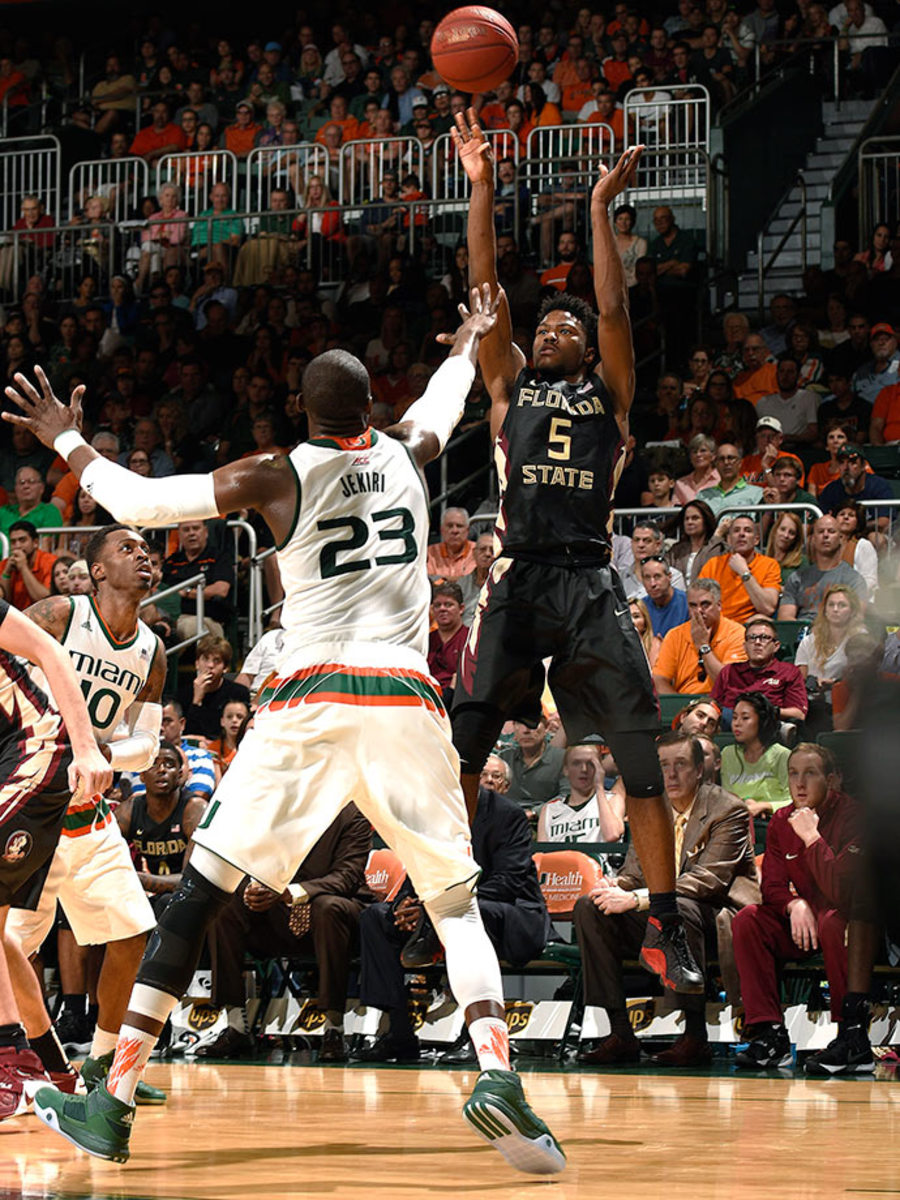
An athletic slasher with a nose for the basket, Beasley demonstrated the ability to score at all three levels in his one season at FSU, and improved as the year went on. He can shoot it, has a great frame and brings notably strong intangibles in terms of makeup and competitiveness. He has a metal rod in his leg after a stress fracture injury that will concern teams.
#30: Stephen Zimmerman, UNLV — 7'0", 240 | Center | Freshman
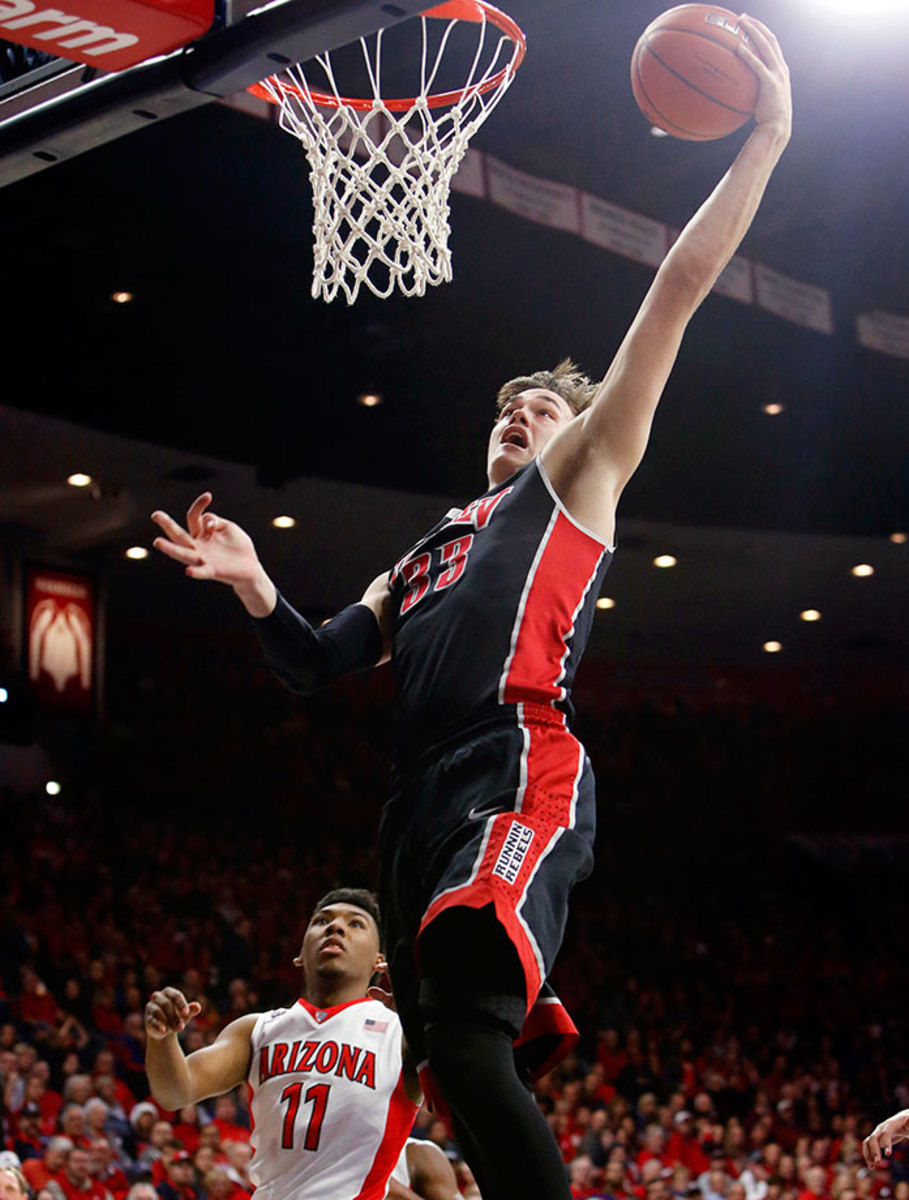
Zimmerman has great size and mobility, and a pretty nice shooting touch. He’s not a guy who really loves to bang inside and has a tendency to float away from the basket too much. He’ll need to bulk up to play center and to defend his position. He’s a dart throw, but taking a chance on a stretch big with some upside isn’t the worst thing in this range.
The suspension forbid Jackson from participating in regular team activities. Instead, Brey met him privately each night in The Pit, Notre Dame’s basement practice facility. “But the workouts didn’t go very long,” Brey says. “The talking did.” Brey would rebound as Jackson hoisted jumpers for 15 minutes. Then the ball would cease bouncing and they’d discuss college life and leadership, maturity and manhood.
By week’s end, Jackson realized playing off the ball was a blessing in disguise. “It really helped me with my versatility,” he says. “Now I know how to be effective on the court in both ways, being able to come off a down screen, come off a fade screen, come off ready to shoot like a two-guard, but also be able to come around a ball screen and be able to do some things a point guard can do.” In his first game back from suspension, Jackson tallied season-highs in points and assists. “I think it might be the best thing that ever happened to him,” Brey says. “And as a sophomore, the light bulb was really on.”
Jackson’s second season in South Bend more closely resembled the superstar from Marian Catholic High School in nearby Mishawaka, Ind., where he was the all-time leading scorer in St. Joseph County with 1,934 career points. He reclaimed his high school No. 11 as a sophomore as well, switching from No. 23 after Garrick Sherman graduated. The digits on Jackson’s chest truly set the stage for his rise at Notre Dame. “You’ve got your number and it’s almost like a ritual, or a superstition,” Jackson says. “I kinda got my little swagger back a bit.” By wearing No. 11, Jackson honors 10 individuals. Technically speaking, he is one of 11 siblings—five biological and five foster.
At 12 years old, Jackson was placed into foster care. He was a sixth grader with an incarcerated father and a mother left behind with too much on her plate. Jackson has not divulged the exact details that placed him into the foster system, but it led to stays in five different homes over two years. “Two of them he said, ‘Coach, I thought I was a prisoner,’” Brey says. As a seventh grader, Jackson found an outlet with the local AAU program, MBA Select. “He was going through rough times figuring out what family he was wanting to live with and moving from foster home to foster home,” says Austin Torres, Jackson’s MBA and Notre Dame teammate and close friend. “Obviously, having that chip on his shoulder, wanting to become a better player.”
Jackson struck a close friendship with MBA teammate Michael Whitfield as well. After Jackson missed countless practices and arrived too late to tournament games, Whitfield’s father, David, offered to drive Jackson to the team’s next function. Soon enough, Jackson was spending entire weekends at the Whitfield residence. And in between games of one-on-one in the backyard, Jackson and Whitfield daydreamed of playing high school basketball together. Whitfield planned to attend Marian. He even brought Jackson to the school’s open house when they were in eighth grade. It would have been impossible for Jackson to attend the school while under foster care, though.
“So when I was sitting and thinking about it, I was just like, ‘I don’t want him to miss out on anything,’” Whitfield says. He approached David. The next time Jackson came over for the weekend, could he, perhaps... maybe, stay indefinitely? A conversation with his mother, Beth, later, the Whitfields, already a family full of five buzzing children, opened their doors to a child their son had only known for a matter of months. “We knew he needed some help,” David says. “We definitely wanted to help out.” Another bed was wedged into the Whitfield's room above the garage. They threw a neighborhood party for all the Whitfield's friends and family to meet their new son. “I still remember that to this day,” Jackson says. “Good food, good people. You add those two things together, you’ve got a good time.” Says Beth, “We consider him a part of our family, and always have. We’re just glad he feels that way, too.”
• Murray wants to join Wolves | Bender could be next Croatian sensation
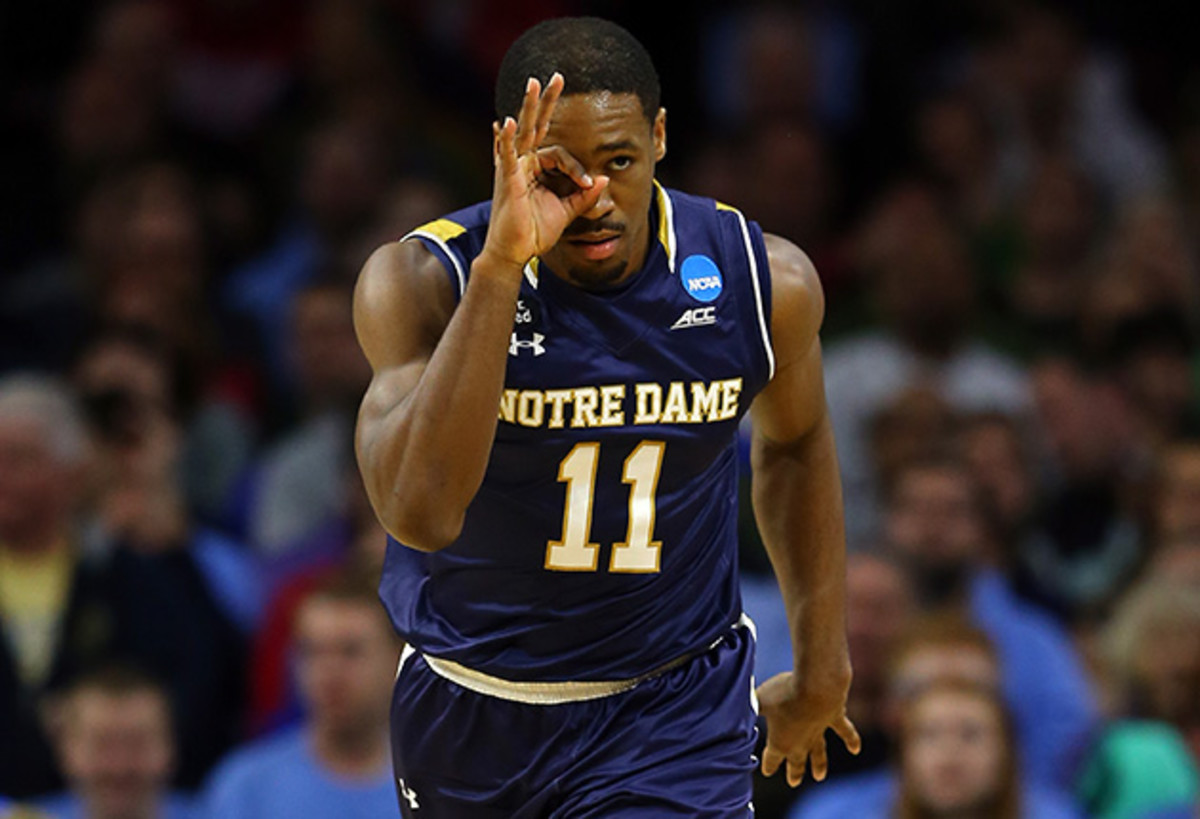
Now brothers, Whitfield and Jackson pedalled bikes around the neighborhood and played catch on a regular basis. Jackson joined the family at their Michigan lake house. David always steered their pontoon boat into the deep waters for the children to jump off and swim into the lake. While his new siblings plunged into the water, Jackson stared helplessly into the abyss. “He was scared at first,” David says. Slowly, Jackson slipped on a life jacket. His new family eventually swayed him to jump. It was the first time Jackson had ever swam.
Jackson’s athletic career at Marian began swimmingly. He starred on the freshman football team and earned a starting role on the varsity basketball team, his extremely raw athleticism on full display during his darts to the rim. Jackson sliced through defenses and skied to finish over bigger opponents nearly twice his size. The freshman’s flashes of potential impressed Notre Dame assistant coach Anthony Solomon. Brey then made the 15 minute drive to Mishawaka from South Bend on his way home from practice, and left the gym praying the local standout would remain a well-kept secret.
By his junior season, Jackson debuted an outside shooting stroke, and MBA Select stormed the AAU circuit. At a Michigan ACB Hoops tournament, Jackson tallied a 43-point, 10-assist, 10-rebound triple double as coaches from across the nation salivated from the stands. He gobbled a steal at the top of MBA’s 1-3-1 zone and made reservations for one at the rim.
• 10 questions with Kris Dunn | NBA draft rumors: Buzz, news
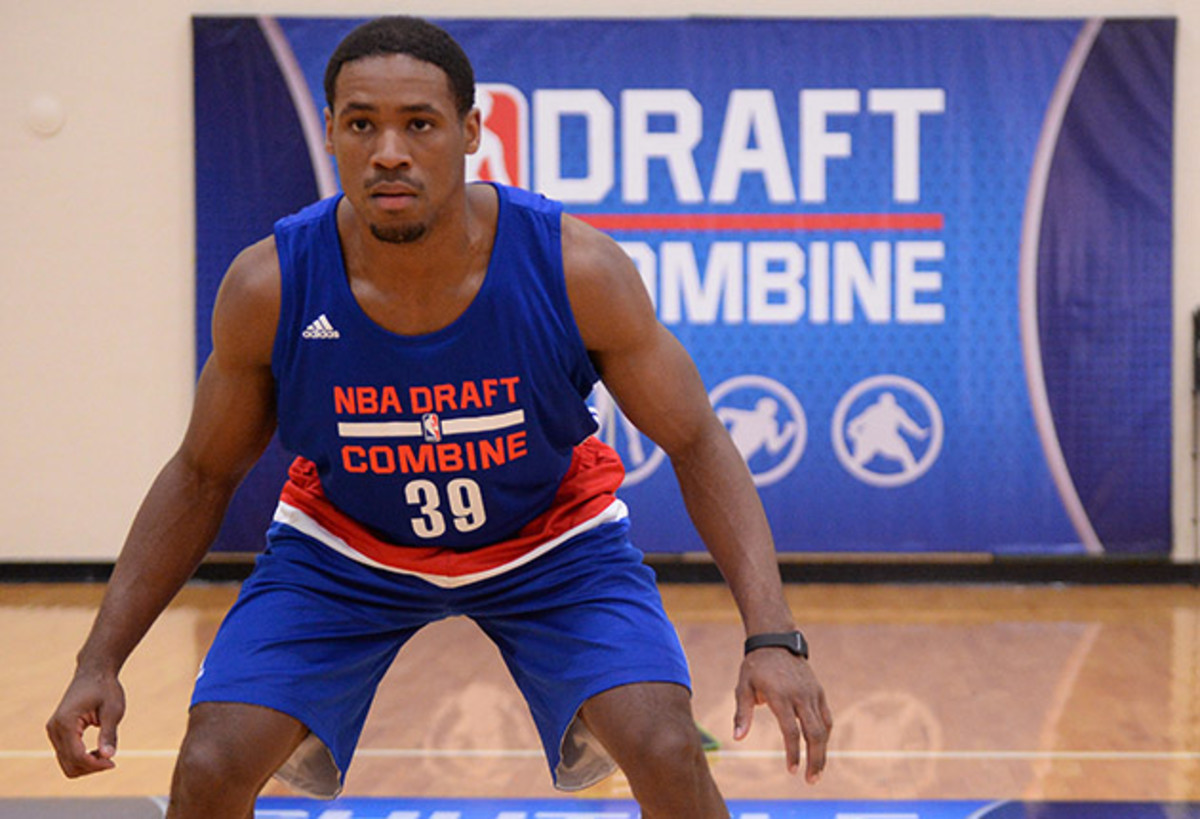
“And just did a 360 like it was nothing,” Torres says. “I remember what color jersey we were wearing, it was just that kind of play.” Jackson seemed to get better with each passing day. “Next thing you look up, you see Mike Brey, Tom Izzo, Bill Self, all those guys are in our gym,” Whitfield says. “And you take a step back and you’re like, ‘Wow, this kid really is one of the top players in the country.’”
Jackson opted to stay close to home so his now-extended family could all watch him play. And after overcoming his turbulent freshman season, he left a lasting imprint on the Notre Dame program. Jackson saved his best in an Irish jersey for last. His manic drive to the rim against Stephen F. Austin sparked the scrum that keyed Rex Pflueger’s second-round, game-winning tip in. Trailing Wisconsin 56–55 with 16 seconds left in the Sweet 16, Jackson scored the game’s final six points and swiped two, back-breaking steals, his last open-court theft icing the game. His masterful 26-point effort on 10–16 shooting against UNC in the Elite Eight closed a spectacular college career.
“As I got on the bus to the airport the next morning, and he was going to meet with me as soon as we got off, I said, ‘It’s time to go,’” Brey says. “He was very ready for the next move and it was time to strike as far as an NBA prospect.”
His size remains a question mark, but Jackson’s superb athletic testing—a 43.5-inch max vertical along with insane agility scores—at the combine eased many doubts from skeptics around the league. At 6’1” with 6’5.5” wingspan, Jackson’s chiseled build is remarkably similar to that of Eric Bledsoe.
On July 9, 2013, Jackson’s father, also named Demetrius, was released from confinement following a 262-month sentence. An Atlanta resident, he smiled from the stands watching his son play against Georgia Tech the last two years. Father and son have begun to build a relationship. “I’ve come to ease with my situation. I’m proud of who I am. I’m proud of where I’ve come so far,” Jackson says. “It’s a long journey ahead.” His NBA journey begins Thursday. An introductory press conference will follow. All signs point to Jackson beaming for the cameras while hoisting a crisp No. 11 jersey.
